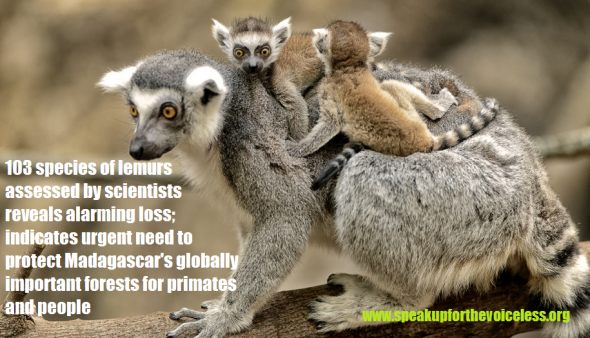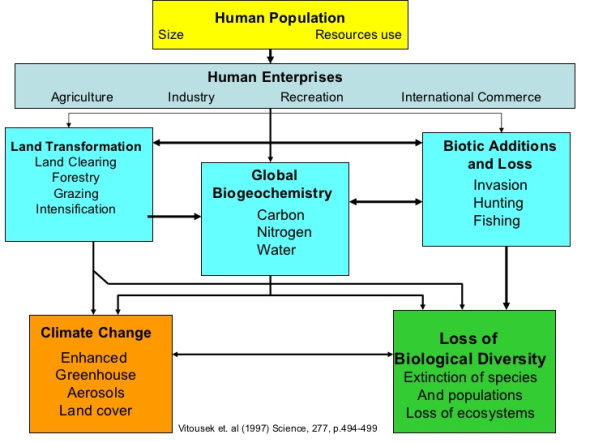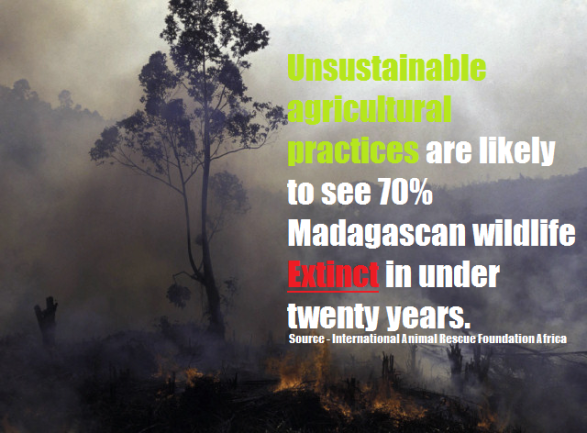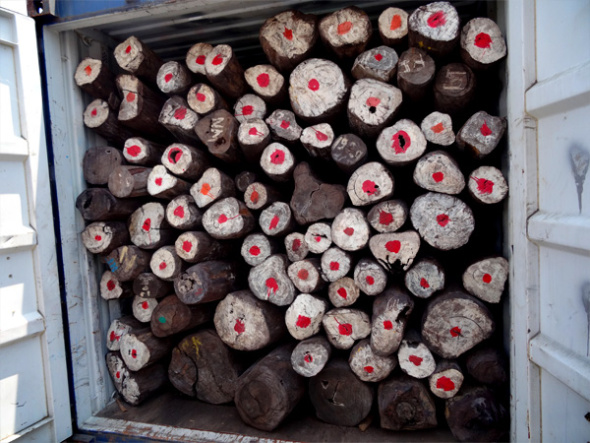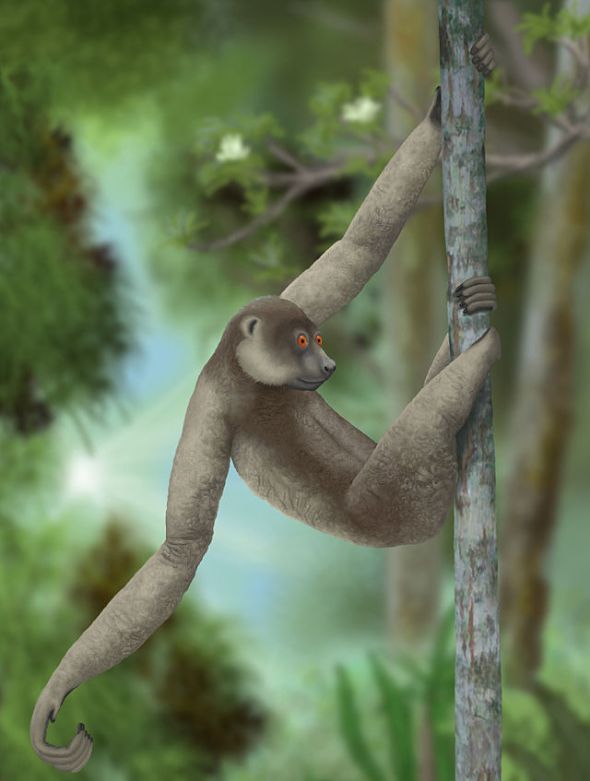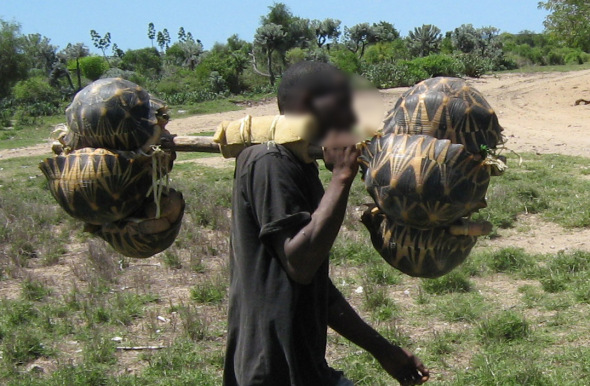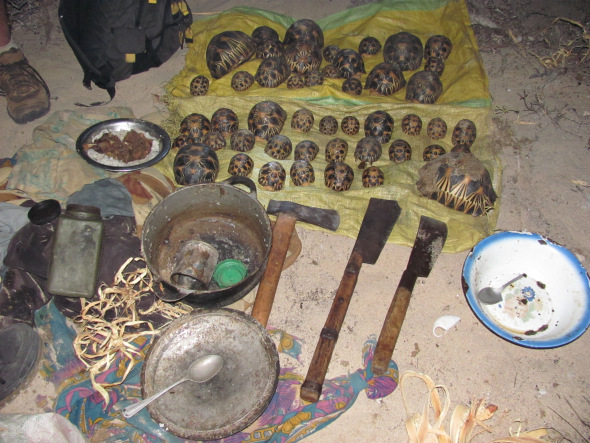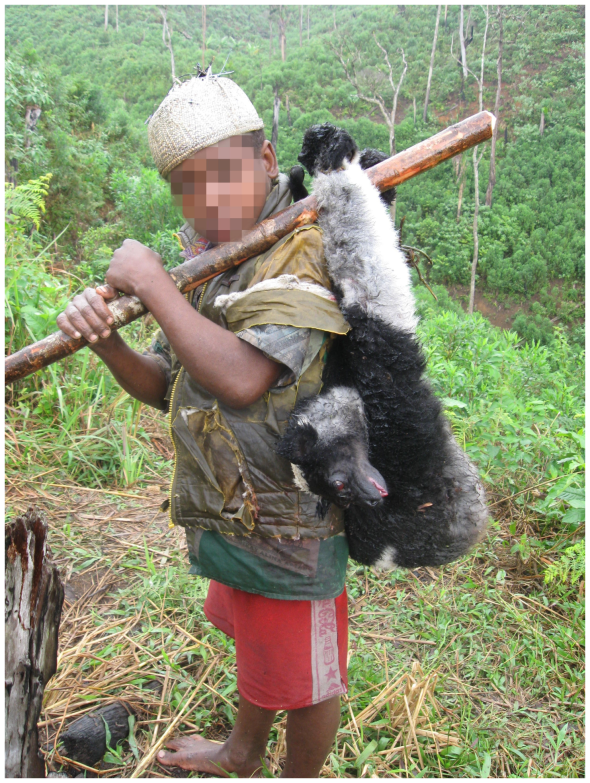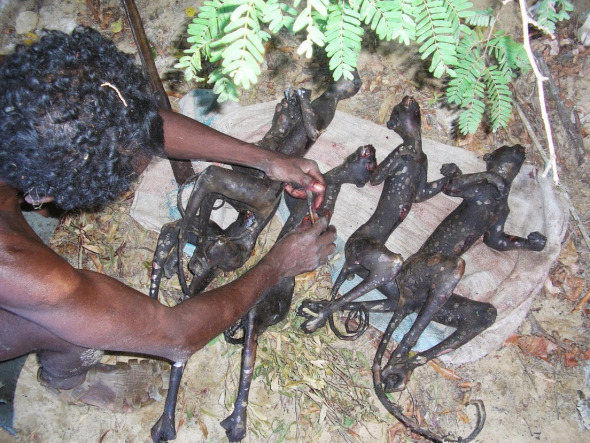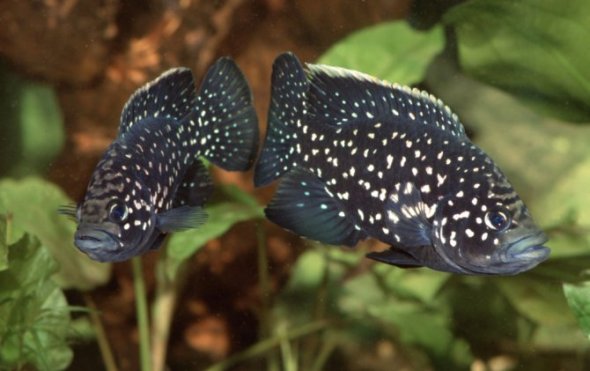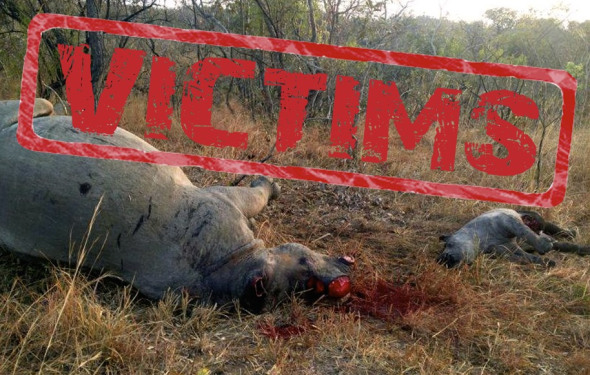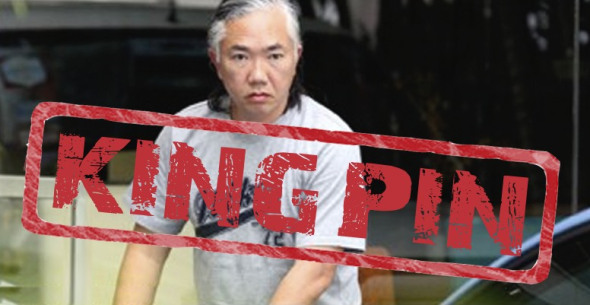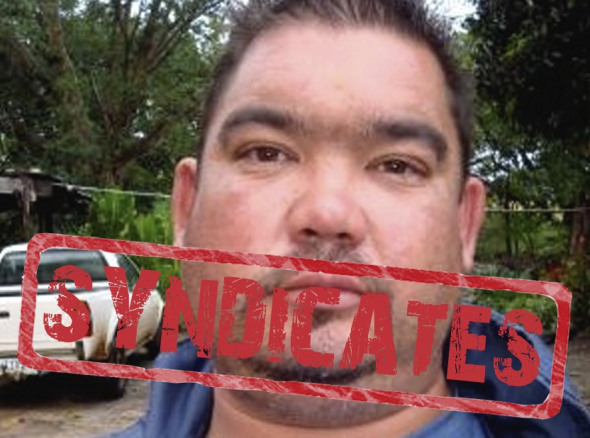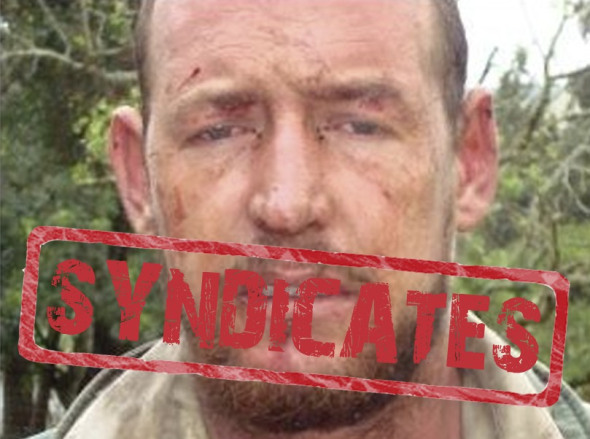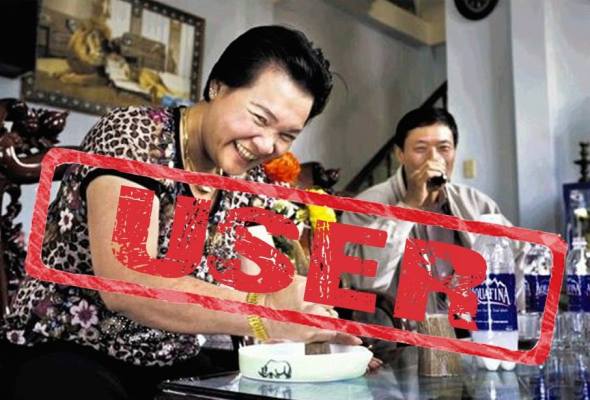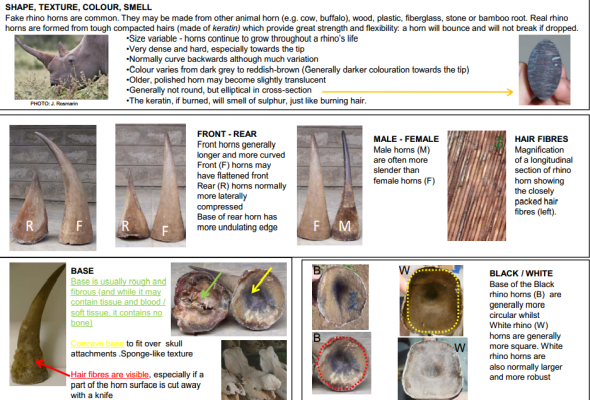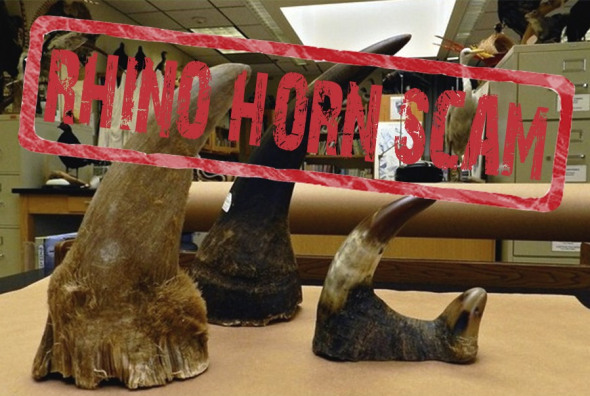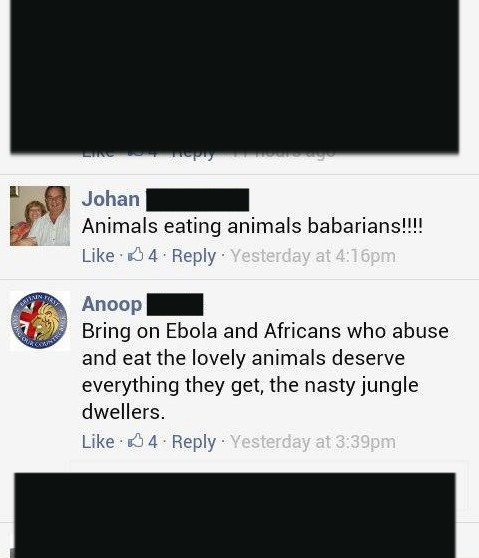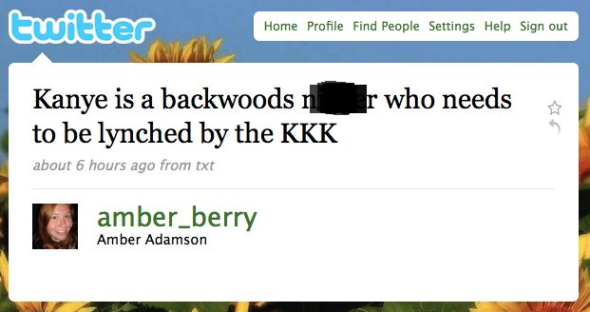Rhino Poaching - Tipping Point.
Rhinoceros poaching began to kick off at the very start of the millennium, back in 2002 we lost a total of around twenty five Rhinoceros. Never did we fathom Rhino poaching would be the ultimate new trend for Traditional Chinese Medicine or used as a status symbol to show wealth and prosperity.
Poaching statistics fluctuated between the years of 2003-2007 which saw a total of eighty two Rhinoceros, gunned down or poisoned with entorphine, faces hacked off and left for dead. The fluctuation between 2003-2007 we believe is due to new trends in the way Rhino horn is processed and used, least forgetting between this year there was much civil tension and wars ongoing of which the illegal wildlife trade funds astronomically.
International Animal Rescue Foundation Africa has already provided evidence to Interpol and Department of Environmental Affairs of Rhino and ivory parts workshops thriving in northern Africa where civil wars have been the spot light for media tension. Trade is not necessarily an issue here in Egypt, Algeria, Mali (north) and Tunisia but more a trafficking/pick up route. Money is parted that is then used to fuel terrorism and purchase firearms. This is an Act of Terror that all governments around the world affected by terrorism must now stand up too.
From 2007-2008 a colossal upsurge of Rhino poaching was seen with the Kruger National Park (KNP) baring yet again the brunt of poaching attacks that has since prompted SANParks and Edna Molewa Environmental Minster head of the Department of Environmental Affairs to order the evacuation of some five hundred Rhinoceros from the Kruger National Park situated next to Kabuk. Kabuk is known as the village that thrives on Rhino horn and is one of many small villages within the Mozambique Transfrontier range. No borders provides easy access for poachers to simply cross into the parks taking out many Rhino.
2008-2010 saw a staggering increase in Rhino horn poaching. From 2008-2010 South Africa lost (not including Rhinos poached over the border) a whopping 500+ Rhinoceros. One would have thought that with such a high security presence, increase in South African National Defense Force and intelligence teams working locally and internationally that poachers would have given up. Unfortunately this is not the case. Millions upon millions of dollars have been donated to various South African organisations and the South African Government yet the poaching continues. International Animal Rescue Foundation’s Chief Environmental Officer Dr Josa Depre quoted in a brief interview yesterday;
“Rhino poaching has reached unprecedented levels, with so much funding being pushed into South Africa to try and stem the flow of poaching one would have believed some improvement would have been seen”.. “The transfrontier fence has still yet to be erected, until this fence is erected poachers from Mozambique, Zimbabwe and north African poachers will continue to walk freely into South Africa slaughtering our mega-fauna”..
“Trans-locating some five hundred Rhino is a positive step in preserving some Kruger Rhino however should not be seen as a simple fix or solution. “All one is doing is moving danger out of Kruger elsewhere that could potentially see people’s lives placed in harms way”..
“Poachers will not stop just because a mere five hundred Rhinoceros have been moved, by moving them one is merely inviting poachers to travel further inland”.. “We have noticed within the past few months that heavily armed poachers are operating and living within Massingir that were not present over several months ago”.. It’s quite likely that by moving these Rhino the opportunistic native Mozambican and Zimbabwean will turn to these heavily armed and well trained military style poachers that could or may place human lives in danger”.. We are all aware that rangers and Anti Poaching Units have been attacked by the modest poachers, what’s to say north African poachers that are special forces trained will kill”… “
“We are now at the tipping point for both Rhino and Elephant, Rhino and Elephant populations have been heavily depleted over the border of Southern Africa so it’s quite evident that we will see in the next five months heavily armed, well trained north African poachers hitting the Kruger hard”.
Poaching is only the tip of a very large stinking iceberg though. Demand within Asia is still continuing whether it be for a pseudo medicine or used as a status symbol to show wealth. Online sales within Hanoi and Saigon are still continuing despite a complete trade ban. See picture below. International Animal Rescue Foundation’s (OTH) team Operation Trojan Horse monitors trade online of all animal parts banned under the Cites agreement. The trader below known as Vun-habo (login name) has been peddling Rhino horn parts since 2012. One only has to search Vietnamese classified advertisements and you’ll locate hundreds if not thousands of antique sellers and non-antique traders specializing in many medicines from facial creams, head ache cures down to rheumatic fever.
From 2011 to 2012 we lost just under one thousand Rhinoceros. Figures for 2011 end stood at 448 with 232 arrests. The following year 2012 end we lost a further 668 Rhinoceros which saw a combined arrest rate of some 267 poachers apprehended. For August 2014 poachers have already exceeded both statistical records from 2010-2012 of which we are now looking at staggering 708 Rhinoceros killed. By the end of the year International Animal Rescue Foundation Africa using model data puts the final statistics at a nauseating 1400 Rhinoceros poached.
Female Rhino cows reach sexual maturity at around 6-7 years old, males at between 10-12 years old. White Rhino have a gestation period of approximately 16 months. Females usually give birth for the first time at the age of 6.5-7 years. The interval between calving is 3-4 years. Pregnant females will leave their crash shortly before the parturition and stay apart for several days afterwards. Calves stand up within one hour, immediately attempting to suckle. Mother and calf become inseparable; the calf usually moves in front of its mother and immediately responds to the mother’s behavior. The calf begins grazing at two months, weaning occurs at around one year of age. The calf stays with mother for around three years.
Female cows cannot produce enough Rhino to keep up with the onslaught of poaching, we are finally at the tipping point which would probably give some inclination as to why Hon Edna Molewa and SANParks have decided to trans-locate some 500+ Rhinoceros, this movement though that has angered Animal Rights Activists has since been delayed. When going to press it was stated that Rhino to be moved where going to hunting lodges however this is not actually factual and no data has been released on where these Rhino will be re-located too. What we can state is and this is based on the very words from the Department of Environmental Affairs that it is possible these Rhino “may” be moved to areas where “sustainable utilization” will be practiced. I.e hunting. This brings us to our next concern. Many African Rhino farmers have stated publicly they hold to many Rhino. So if this is the case then why are these Rhino not re-located to provide monetary funding for sustainable utilization? Or is it the case that to many Rhino have been dehorned and hunters will only wish to hunt a Rhinoceros that hasn’t been disfigured?
Since 2012 reports have emerged that fake Rhino horns have been flooding the market within China and Vietnam. This has led to some concerns that it could well be increasing the poaching more. Please view pictures below.
Counterfeit Rhino horn trade is big business within Africa and Asia of which poses a significant threat to any proposed legal Rhinoceros horn trade, regardless of what the pro trade lobby has suggested within online forums and meetings with governmental environmental agencies.
Sophisticated syndicated and highly organised gangs are now making very high quality fake horns, allowing unscrupulous hunters to sell the real horns at a huge mark-up to black market dealers for traditional medicine and status symbols. The fake horns are made with top quality resins and look so authentic that they are almost impossible to distinguish from the real thing, a report presented July 2012 to members of the Convention on International Trade in Endangered Species (Cites) says. The report, presented to the convention’s standing committee in Geneva, says Cites officials have been alerted to the increasing involvement of “professional hunters in the illegal Rhino horn trade”. Yet hunters deny having any involvement within the trade whatsoever.
Cites did not specify in which country the fake horns were being made and sold, but details in the report point to the possible involvement of either American or European hunters in the fake horn scam. In 2012, wildlife investigators in the US arrested several American and Vietnamese nationals in a major bust in several cities across the US following the seizure of numerous Rhino horns, some of which were suspected to have originated from legal Rhino hunts in SA and other parts of the continent. Since 2012 there have been countless people apprehend involved in the peddling of counterfeit Rhino horn. The possibility that this “may” be increasing poaching within Africa is all to real.
Concluding;
Rhino poaching has reached record levels in South Africa, having escalated for five years in a row. On current trends, deaths have now pushed the Rhino to tipping point and unless something majorly drastic is not seen we will begin to see localized extinctions occurring within South Africa.
South Africa WAS home to 80 per cent of Africa’s Rhinos, but 1004 animals were killed there last year, compared with 668 in 2012, according to the South African Department of Environmental Affairs. No more than 36 were killed each year between 1990 and 2007, but poaching has increased exponentially since 2008. Other countries with Rhinos have seen similar increases.
The poaching escalation has sadly brought South Africa’s white Rhino population to a tipping point where deaths are now outnumbering births. It is no longer a fact of if but more when will we see extinctions occur. Cites signatories must now act and enforce sanctions on user nations, demand the transfrontier fence is erected, implement a Rhino hunting moratorium as evidence has shown hunters and the very people paid to preserve our Rhino have also been involved in killing them too.
The trade has mushroomed despite the introduction of tougher anti-poaching measures in South Africa, including more rangers and drone aircraft.
Supply and demand
Conservationists blame soaring demand in China and especially Vietnam, where Rhino horn has become a highly prized status symbol and valued gift, as revealed in a recent TRAFFIC report. South Africa’s tough stance is also being undermined by lax enforcement in neighboring Mozambique, which serves as a conduit for illegal Rhino material to the Far East. In Mozambique, people who steal chickens receive worse penalties than poachers caught with illegal Rhino horn, according to Mike Knight of the African Rhino Specialist Group of the International Union for Conservation of Nature in Port Elizabeth, South Africa.
South Africa and Mozambique must decisively up their game if they hope to stop this blatant robbery of southern Africa’s natural heritage. As well as tougher enforcement, reducing demand is crucial. We must put pressure on the countries that are creating demand, especially Vietnam and China. This year $350,000 was raised for Rhino conservation by auctioning off the right to kill a specific Rhino. It was alleged that if conservation groups hadn’t complained about the auction, it would have raised $1 million. No matter how many Rhino are being killed legally its not going to save them. Many farmers are now under the illusion that by 2016 the next Cites conference will see trade Rhino horn trade legalized. South Africa doesn’t stand a chance so as long as the killing continues coupled with demand and trade in Asia.
We are losing our Rhinoceros. The death toll to date stands at a staggering 700+.
Thank you for reading
Dr Josa Depre.
info@international-animalrescue-foundation.org.uk
Please view the video below and share this article. The video depicts children that are creating awareness of the current Rhino poaching trend. The more children we educate the possibility that future poaching crazes will decrease is quite possible. Education starts here and can have quite an impact.
Notice a typo? Please contact us above and we’ll correct it as soon as possible.
A World Apart - Madagascar Paradise in Peril.
Reports released this June 2014 show a very dark future for Madagascan wildlife, most concerning of all are 80% of temperate slipper orchids and over 90% of lemurs that are threatened with extinction, according to the latest update of the IUCN Red List of Threatened Species.
International Animal Rescue Foundation Africa have been documenting and researching heavily on the grim future that faces our Madagascan wildlife for several years and nothing seems to be really improving if anything habitat fragmentation is drastically increasing, lemur and fauna species habitat is being overrun by farms and herders. It is most likely that the very first mass extinctions are going to occur within Madagascar yet little debate and concern of this issue is being made within the public domain. Only this June did the International Union for the Conservation of Nature (IUCN) show more concern for threatened species within Madagascar. And when one thought it could not gert any worse did we hear that the worlds rarest bird the Madagascan pochard is likely to be extinct by the end of the 2015 unless drastic action is taken now to preserve the species.
History of Madagascar;
Madagascar a small tropical island situated on the east side of the continent of Africa compromises around 22,005,222 people as seen in the (2012) census, 1994 census showed around 12,238,914 living on the island of which the island host some ten ethnic minority groups. As one can clearly see the problem Madagascar is having like many countries locally and internationally is human over-population that threatens the wildlife and will eventually push many species of animals into extinction due to habitat destructiveness.
Until the late 18th century, the island of Madagascar was ruled by a fragmented assortment of shifting socio-political alliances. Beginning in the early 19th century, most of the island was united and ruled as the Kingdom of Madagascar by a series of Merina nobles. The monarchy collapsed in 1897 when the island was absorbed into the French colonial empire, from which the island gained independence in 1960. The autonomous state of Madagascar has since undergone four major constitutional periods, termed Republics. Since 1992 the nation has officially been governed as a constitutional democracy from its capital at Antananarivo. However, in a popular uprising in 2009 president Marc Ravalomanana was made to resign and presidential power was transferred in March 2009 to Andry Rajoelina in a move widely viewed by the international community as a coup d’état. Constitutional governance was restored in January 2014 when Hery Rajaonarimampianina was named president following a 2013 election deemed fair and transparent by the international community.
In 2012, the population of Madagascar was estimated at just over 22 million, 90 percent of whom live on less than two dollars per day. Malagasy and French are both official languages of the state. The majority of the population adheres to traditional beliefs, Christianity, or an amalgamation of both. Ecotourism and agriculture, paired with greater investments in education, health and private enterprise, are key elements of Madagascar’s development strategy. Under Ravalomanana these investments produced substantial economic growth but the benefits were not evenly spread throughout the population, producing tensions over the increasing cost of living and declining living standards among the poor and some segments of the middle class. As of 2014, the economy has been weakened by the recently concluded political crisis and quality of life remains low for the majority of the Malagasy population.
Again poverty, human overpopulation and increasing cost of living is playing quite a destructive role reducing wildlife on this vast tropical island once filled with an abundant of fauna and flora. While this may be quite a substantial problem so too is poaching on the island. Bush meat trade is thriving that see’s lemurs and critically endangered reptiles killed out of sheer starvation rather than “traditional beliefs”. Vanilla farming that has increased within Madagascar is also hampering conservation efforts with regards to Lemurs. At the beginning of the millennium did we really start seeing environmental destruction regarding the palm oil trade within Asia and Africa. Now we have the vanilla trade that is causing some rather large concerns among conservation groups which was highlighted in full by International Animal Rescue Foundation’s Endangered Species Watch Project.
Human overpopulation though remains the main critical factor here that is endangering all of the worlds wildlife. Human overpopulation has increased at at almost exponential rate. With this growth comes an increase in demand for food, water, land, energy and other resources. As human numbers grow within Madagascar so does wildlife diminishes. Biodiversity is the variety of all forms of life throughout an (ecosystem). High rates of extinction are quickly reducing biodiversity especially in areas of the world with high human population and density. As one can clearly see here Madagascar is one prime example. The direct and indirect effect that humans have had on biodiversity can be seen in the graph below.
Madagascar’s natural resources include a variety of unprocessed agricultural and mineral resources. Agriculture, including raffia, fishing and forestry, is a mainstay of the economy. Madagascar is the world’s principal supplier of vanilla, cloves and ylang-ylang. Other key agricultural resources include coffee, lychees and shrimp. Key mineral resources include various types of precious and semi-precious stones, and Madagascar currently provides half of the world’s supply of sapphires, which were discovered near Ilakaka in the late 1990s. The island also holds one of the world’s largest reserves of ilmenite (titanium ore), as well as important reserves of chromite, coal, iron, cobalt, copper and nickel. Several major projects are underway in the mining, oil and gas sectors that are anticipated to give a significant boost to the Malagasy economy.
These include such projects as ilmenite and zircon mining from heavy mineral sands near Tôlanaro by Rio Tinto, extraction of nickel near Moramanga and its processing near Toamasina by Sherritt International, and the development of the giant onshore heavy oil deposits at Tsimiroro and Bemolanga by Madagascar Oil.
Exports formed 28 percent of GDP in 2009. Most of the country’s export revenue is derived from the textiles industry, fish and shellfish, vanilla, cloves and other foodstuffs. France is Madagascar’s main trading partner, although the United States, Japan and Germany also have strong economic ties to the country. The Madagascar-U.S. Business Council was formed in May 2003, as a collaboration between USAID and Malagasy artisan producers to support the export of local handicrafts to foreign markets. Imports of such items as foodstuffs, fuel, capital goods, vehicles, consumer goods and electronics consume an estimated 52 percent of GDP. The main sources of Madagascar’s imports include France, China, Iran, Mauritius and Hong Kong.
Paradise in Peril;
Evidence suggests the first human encounter with Madagascar’s amazing biodiveristy occurred only two thousand years ago. The original settlers probably came by boat from the Polynesian islands or from Africa, bringing with them a farming technique known as “tavy.” In tavy, a farmer cuts a portion of the forest and then burns it, planting rice that is irrigated by rainfall alone. After harvesting the rice, the farmer and his family leave the forest fallow, sometimes for up to 20 years. Once the forest has grown back, many nutrients are again stored in the trunks and foliage, and these are released in the next slash and burn cycle of farming, providing fertilizer for the crop.
This farming practice works well and does not permanently destroy the forest as long as field sizes are small and farmers leave adequate time for re-growth. However, if farmers return to the fallow fields too quickly, as they do when human population densities increase, the soils become exhausted. And if little forest is left in between fields, then there are no parent trees to provide seeds and seedlings to restore the forest. Eventually large areas of forest are transformed into wastelands, upon which nothing can grow—neither rice nor forest. On these areas, farmers pasture a few cattle and continue to burn the grasslands each year, to provide “greener grass” for the cattle.
Sadly, much of Madagascar has been destroyed, by the gradual action of small farmers and herdsmen. Human populations have grown long beyond the point at which these activities can be practiced without permanent destruction. As the forest is destroyed, so is the habitat for Madagascar’s unique plant and animal species. The loss of habitat due to deforestation is the biggest single threat to Madagascar’s wildlife. Although the exact extent of forest loss is not known with certainty, only 10 percent of Madagascar’s forests remain. Also, recent estimates suggest that 1-2 percent of Madagascar’s remaining forests are destroyed each year, and that a staggering 80-90 percent of Madagascar’s land area burns each year.
Although much of the forest destruction may have come about at the hand of the small farmer or herdsman, the causes of environmental degradation are deeply rooted in social, economic, political and historical factors. Madagascar is one of the world’s poorest nations, with a per capita income of approximately $240 per year. About 80 percent of the population are subsistence farmers, many of whom depend entirely on “natural capital” to support their way of life. Yet this way of life is time-limited: as the forest is destroyed so tavy must also end. At the moment, however, many farmers continue to practice traditional slash and burn agriculture because it is their culture, and because they know no other way and have no other means to survive.
Rural people depend on the forest in other ways, and in so doing, pose other threats to this tremendously important resource. In the rainforest, nearby dwellers may use several hundred species of plants and animals for food, shelter, firewood, medicines, fiber, resin, construction, household implements and clothing. Sometimes, as in the case of the most sought-after species, over-collection or over-hunting is now leading to depletion and local extinction of precious biological and natural resources. Indeed, the extinction of several large-bodied lemur species and of the elephant bird (a member of the ostrich family that weighed up to half a ton) within the past several thousand years may have been due at least in part to over-hunting by the early human inhabitants of Madagascar.
Conservation actions under way;
Even with sound conservation projects under way its quite likely that we will lose a staggering seventy to eighty percent of fauna and flora in the years to come. International Animal Rescue Foundation’s External Affairs Conservation Unit has estimated that by the year 2020 its quite likely the majority of Lemur species will have been pushed into extinction this also includes birds and reptilians that depend on the forest as a source of food, refuge and safe haven. External Affairs Unit evaluated forests in the Moramanga region over a period of two years during the seven year research program. They found that deforestation is not only killing off species of both flora and fauna but is opening roads and pathways up to poachers that can gain easy access to once very secluded and non-accessible species of primate and reptilian.
Since the beginning of Madagascar’s Environmental Action Plan, Madagascar has established eight new protected areas totaling 6,809 square kilometers. The country’s new National Association for Protected Area Management has taken over the management of several of the key National Parks for ecotourism (Ranomafana, Isalo, Montagne d’Ambre). As Lisa Dean of CARE International Madagascar said upon the inauguration of the park at Masoala, “The approval of the Masoala National Park … represents a huge commitment by the Madagascar government, done against all odds.” Indeed, for Masoala and many of its other protected areas, Madagascar can be proud of its often path-breaking efforts to develop a plausible, well-founded approach to “parks for wildlife and for people.” Of course, much work remains to ensure that the existing parks and reserves will continue far into the future to provide habitat for Madagascar’s fabulous biodiversity, and the resources for a sustainable future for Madagascar’s people.
Timber mafia and corrupt politicians threaten Madagascar’s wildlife;
While many activists are fighting to stop the slaughter of animals both wild and farmed its now time to focus one’s attention too on the Timber Mafia that is threatening some one hundred species of Lemur and thousands of exotic wildlife specimens endemic to Madagascar. Just how big the timber trade is we will never know. We are aware though that timber is being exported from Madagascar to the mainland continent on the back of large forty four foot wagons through national parks.
Back in 2009 $100m worth of hardwood had been cut down and sold, mostly to China to be turned into furniture. It is believed the same mafia that is ordering such large amounts of hardwood is responsible for the sandalwood trade in India too. The government, which levies a 40% export tax, is accused of not only failing to stop the trade but actively encouraging it. It issued an order back in 2009 authorising the export of raw and semi-processed hardwood. This supposedly related to trees already felled in cyclones, but environmental activists say it has only provided an incentive for more illegal logging.
And yet again China is seen as being the main Mr Big involved in the mass habitat destruction within Madagascar. The EIA - Environmental Investigation Agency stated below;
Voluntary guidelines established by the Chinese government won’t be enough to curb rampant timber smuggling by Chinese companies, putting ‘responsible’ actors at risk of having their reputations tarnished, argues a new campaign by the Environmental Investigation Agency (EIA).
Citing a series of recent investigations into illegal logging and timber smuggling involving Chinese enterprises, EIA warned that new guidelines from China’s State Forestry Administration focus too little on timber imports.
“The guidelines are skewed to the operations of Chinese enterprises overseas, and do not regulate importers of illegally-logged timber into China,” said a statement issued by the group.
Jago Wadley, EIA Forest Campaigner, added that the government should establish binding and enforceable laws, rather than voluntary standards.
“As the world’s biggest importer of illegal wood, and in light of extensive irrefutable evidence that Chinese companies are complicit in driving destructive illegal logging and timber smuggling, China needs to move beyond unenforceable voluntary guidelines and take unequivocal actions to prohibit illegal timber,” Wadley said.
Failure to do so could hurt the credibility of Chinese firms trying to sell wood products in markets that have banned imports of illegally sourced timber.
“The guidelines do not offer any reassurances to importers in the US and EU carrying out due diligence that timber products imported from China can be proven to be legal,” said EIA.
“The perpetuation of voluntary approaches to promote legal timber trade maintains an uneven and uncompetitive playing field for the increasing number of responsible companies in China already working to exclude illegal timber from their supply chains. Such companies will find it increasingly difficult to compete with companies trading products made with illegal timber, in ways that structurally penalize legal timber traders. A prohibition on trade in illegal timber is in the interests of those responsible Chinese businesses.”
Species in decline;
There are hundreds of species of plant and animals now verging extinction, nearing endangerment or are listed as vulnerable on the island of Madagascar. The sheer number of lemurs below all of which are listed as (endangered) (critically endangered) or (extinct) just shows how big a problem we have within Madagascar. We ourselves find it quite odd that some African conservation groups are stating that lemur population declines are not as bad as once thought. However if one does there research you’ll locate that out of the listed “endangered” lemurs below you’ll find no more than twelve that are actually of least concern or near threatened. All of the species listed below are verging complete species wipe out in the next ten years unless conservation efforts improve and the Madagascan government do not tackle the timber mafia that is threatening lemur populations all over the island.
Lemurs that could be pushed into complete extinction in under ten years;
Avahi betsileo, Avahi cleesei, Avahi meridionalis, Avahi mooreorum, Avahi occidentalis, Cheirogaleus sibreei, Eulemur albifrons, Eulemur cinereiceps, Eulemur collaris, Eulemur coronatus, Eulemur flavifrons, Eulemur mongoz, Eulemur sanfordi, Hapalemur alaotrensis, Hapalemur aureus, Lemur catta, Lepilemur ahmansonorum, Lepilemur ankaranensis, Lepilemur betsileo, Lepilemur edwardsi, Lepilemur fleuretae, Lepilemur grewcockorum, Lepilemur hollandorum, Lepilemur hubbardorum, Lepilemur jamesorum, Lepilemur leucopus, Lepilemur microdon, Lepilemur milanoii, Lepilemur mittermeieri, Lepilemur otto, Lepilemur randrianasoloi, Lepilemur sahamalazensis, Lepilemur scottorum, Lepilemur septentrionalis, Lepilemur tymerlachsoni, Lepilemur wrightae, Microcebus arnholdi, Microcebus berthae, Microcebus bongolavensis, Microcebus danfossi, Microcebus gerpi, Microcebus jollyae, Microcebus macarthurii, Microcebus mamiratra , Microcebus margotmarshae, Microcebus marohita, Microcebus mittermeieri, Microcebus ravelobensis , Microcebus sambiranensis, Microcebus simmonsi , Mirza coquereli , Mirza zaza, Large Sloth Lemur - Palaeopropithecus ingens (extinct), Phaner electromontis, Phaner pallescens, Phaner parienti, Pristimantis lemur, Prolemur simus, Varecia rubra, Varecia variegata
Out of the listed lemur species above only several species thus far has gone extinct - The extinction of Palaeopropithecus ingens and other related (genera) commonly known as the sloth lemur should be quite a clear message to environmental groups and advocates helping lemurs and other animals of what to expect in the near future when seeing vast declines of wildlife. Again it is believed that “human overpopulation” was to blame for several of the Palaeopropithecus going extinct.
When Palaeopropithecus went extinct is not exactly clear, however scientists have suggested that it could be as recent as about five hundred years ago (anywhere from 1300 to 1620AD). The reason behind the extinction of the several species of Palaeopropithecus has been attributed to the presence of humans to the island of Madagascar, the earliest evidence of which dates back to 2325±43 yr BP.
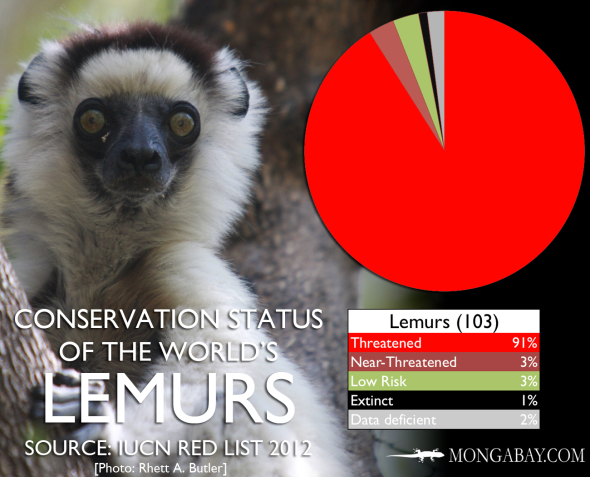
Scientists have found fossils of Palaeopropithecus that appeared to have cut marks in them, suggesting flesh removal with a sharp object, indicating that the species was hunted by the earliest colonists to the island of Madagascar as a source for food. The first evidence of the early human butchery to Palaeopropithecus was found by Hon. Paul Ayshford Methuen, in 1911, who traveled to Madagascar expressly to collect bones of the extinct lemurs for the Oxford Museum.
The slow locomotion habits of Palaeopropithecus likely made them an easy target for their human predators, who would consume them for food, as well as use the bones for tools. The introduction of humans to Madagascar brought change to an island that had yet to experience the lifestyles of human beings.
Introduction of man-made charcoal and fire to the island caused considerable damage to the forests where Palaeopropithecus lived and bred. In addition the slow reproductive habits of Palaeopropithecus probably attributed to their swift and sudden extinction.
Hunters often state on in our public forums that hunt only for food that they are disgusted by trophy hunters that place species in danger and rarely benefit any conservation project. However it should be stated now that all hunting even for food can endanger any species of which the proof is quite clear above.
Picture drawing of the Palaeopropithecus ingens can be seen below for your information;
Palaeopropithecus ingens - Officially Extinct
The main principal threat that is associated with the majority of lemurs can be viewed below;
The principal threats are habitat loss and hunting. Due to their large size and evident need for tall primary forest, these animals are particularly susceptible to human encroachment and, sadly, hunting and trapping for food still takes place. Furthermore, because remaining populations are concentrated, they may be threatened by the frequent cyclones (hurricanes) however this threat is mainly to the lemur species that live on the coastal ridges of Madagascar and high exposed mountainous ranges. The range of lemur species has also recently been heavily impacted on by the very rapid upsurge of illegal logging after the political events of early 2009, in addition to fires.
Poaching;
Poaching seems to be the second largest thereat to all African animals as we know it. If its not the Rhinoceros or Elephant on the continent of Africa we now see many new and old world species of primate poached for bush meat trade, traditional medicine, garments or witch-craft. We must also remember too that animals are not the only species under threat from poachers. Tropical plants are being ripped from their natural habitat then sold on at very high prices on the black market. International Animal Rescue Foundation France located over a dozen sites online that are peddling threatened species of flora.
Poachers are threatening the survival of the northern Madagascar spider tortoise, which only lives along a narrow strip of the island’s coast. The animal has disappeared from swathes of its habitat, taken by collectors to supply the exotic pet trade.
Wild numbers of the tortoise may have already fallen by 90%, say scientists who have just surveyed its population. The problem continues to worsen due to political instability in the country, which makes it easier for smugglers.
The Madagascar spider tortoise is one of the smaller species of tortoise, and is distinguished by the intricate spider web patterning on the shells of adults. Hence its scientific name Pyxis arachnoides. It occurs as three distinct subspecies, each of which has a slightly different shell shape and lives in a different part of the coastal spiny forests within southwest Madagascar.
However, the tortoise’s appearance is also its downfall.
A new survey suggests that the northern Madagascar spiny tortoise (P. a. brygooi) is now extinct across 50% of its former historical range, with huge numbers being collected to supply the international trade in exotic pets.
Trade in the species is banned, but thousands of the animals are still being smuggled out of the country illegally, says Ryan Walker, a senior wildlife biologist at Nautilus Ecology based in Greetham, Rutland, UK. Walker, who is also a member of the International Union for the Conservation of Nature’s (IUCN) Tortoise and Freshwater Turtle Specialist Group, conducted a survey in March covering all the whole range where the tortoise was once thought to live.
Together with biologists from the Open University in the UK, the IUCN specialist group and the University of Antananarivo in Madagascar, Walker searched 60 sites in detail for wild spider tortoises, recording their occurrence and population density.
He presented the results this month to the Turtle Survival Alliance Meeting in St Louis, US and is also submitting them to the journal Herpetologica. The reports have since been submitted.
“The most striking aspect of the survey was that huge areas of suitable habitat were completely devoid of tortoises. A sure sign that the collectors had been in to collect them for either local consumption as food or collection for black market to supply the pet trade,” says Walker.
He estimates that two million wild northern spider tortoises remain.
“That sounds quite a lot. But 35% occur in a very small area of forest and are susceptible to being wiped out pretty quickly by collectors.”
“The remaining animals are in very isolated and fragmented populations with very low numbers of tortoises, which are unlikely to recover into healthy populations,” Walker says.
“As an educated and conservative guess I would say that the global population of northern tortoises have probably decreased by greater than 90% since human induced pressure has been placed on the animals.”
Some local communities hunt the tortoise for food. But the greatest threat comes from organised gangs visiting the area and collecting spider tortoises for illegal export. A single spider tortoise can reach US$1000 each on the pet and exotic reptile market, prices that drive the unsustainable trade. The northern subspecies is probably facing greater threats than the other two subspecies from poaching, by local populations as a food source and also by gangs for export to support the illegal pet trade in the animal.
Picture above shows tortoises poached on the southern side of Madagascar.
The other two subspecies don’t tend to end up as readily on the pet market and the tribes further south won’t eat them, however they are suffering from an alarming rate of habitat destruction, says Walker. He also says the threat to the tortoises from poaching is currently greater due to the current political turmoil in Madagascar brought about by the political coup in January.
Disorganisation at government level has meant that it is easier to get endangered species out of the country with false paperwork or blank permits that are easier to get hold of, he explains. Its quite clear to say that within the government of Madagascar there are some heavy and very keen most likely ruthless and dangerous wildlife syndicates or Don’s that are orchestrating the illegal wildlife trade within Madagascar while safe and practically untouchable within their “roles” as country leaders, advisers and ambassadors. To be honest the entire affairs stink and trade sanctions should be considered against the Madagascan government to preserve our species before anymore losses are seen.
Poachers camp located in Madagascar shows tools of the trade used to kill and protect the poachers from law enforcement agencies and for easy travelling among the dense forestland. Spider tortoises and young can be clearly seen in the back ground too.
Bush-meat trade;
Patterns of bush-meat consumption has revealed extensive exploitation of protected species in eastern Madagascar and from looking at the facts present it doesn’t look set to end in the near future which is yet another factor placing our species of wildlife in Madagascar under immense threat. Even more concerning and on such a small island is the threat of Ebola Hemorrhagic Fever. Currently as yet there are no confirmed cases however as we have explained and warned many times its only a matter of time that more virus are going to emerge within Africa and Asia. Fruit bats that are quite commonly killed and consumed all over Africa including Madagascar do pose a significantly high threat of spreading Ebola Hemorrhagic Fever to the locals. If such a virus did hit this island containing it would prove to be more of a headache than it currently is within Western Africa.
Using interviews with 1154 households in 12 communes in eastern Madagascar, as well as local monitoring data, conservationists investigated the importance of socio-economic variables, taste preference and traditional taboos on consumption of 50 wild and domestic species. The majority of meals contain no animal protein. However, respondents consume a wide range of wild species and 95% of respondents have eaten at least one protected species (and nearly 45% have eaten more than 10). The rural/urban divide and wealth are important predictors of bush-meat consumption, but the magnitude and direction of the effect varies between species. Bush-meat species are not preferred and are considered inferior to fish and domestic animals. Taboos have provided protection to some species, particularly the Endangered Indri, but evidence now shows that this taboo is rapidly eroding. The Indri is facing danger.
By considering a variety of potential influences on consumption in a single study conservation teams have improved understanding of who is eating bush-meat and why. Evidence that bush-meat species are not generally preferred meats suggest that projects which increase the availability of domestic meat and fish may have success at reducing demand. We also suggest that enforcement of existing wildlife and firearm laws should be a priority, particularly in areas undergoing rapid social change. The issue of hunting as an important threat to biodiversity in Madagascar is only now being fully recognised. Urgent action is required to ensure that heavily hunted species are adequately protected.
Boy carrying a recently killed Indri (the largest remaining lemur in Madagascar).
Recent analysis results shows a mixed diet of both protected species, and non-protected species consumed within the bush-meat trade on Madagascar. The results can be seen below;
The 1,154 households with which we carried out interviews were split 11.4% urban and 88.6% rural. The majority of people in our rural sample classify themselves as farmers (more than 70% in all wealth categories), while more than 60% of urban people in all wealth categories say their livelihood is based in salaried work. There were slightly higher numbers of migrants in the urban than the rural samples (36.2% and 27.4% respectively).
Of 3425 meals sampled in our dataset, the majority (74.5%) contained no animal protein, 11.8% contained protein from domestic animals and 13.7% contained protein from wild-caught animals. Of the 469 meals containing wild meat, the majority were fish and aquatic invertebrates, with only 9.6% from terrestrial wild animals (1.3% of all meals). The proportion of meals reported to contain meat from legally protected species (i.e., those categorised as strictly protected or protected) was very small (18 meals, or 0.5%).
There was strong support for the model which included all three predictor variables. Predictions generated from the fitted model show the influence of the modelled predictors on the consumption of animal protein in Malagasy households.
Urban households consume approximately twice as many meals containing meat as rural households on average (52.8% and 25.8% respectively), and migrants consume nearly twice as many meals containing meat than residents (41.9% and 29.4% respectively). Similarly, the proportion of meals containing meat is higher in households with a greater number of rooms, with households having three or more rooms consuming on average 60% more meals containing meat than single-room households (41.4% and 25.8% respectively). The size of the effect of each of the three variables was greater for domestic meat that for wild meat.
Within reports highlighted a few days ago by the IUCN and scholarships, conservationists “could” be correct in stating the bush-meat trade is not as bad as it has been portrayed. However while these researchers have questioned those consuming meat both domestic and wild it only relates to a small minority and not the millions of people that inhabit Madagascar.
Picture above depicts five prepared Lemur Sifaka’s.
Despite the low proportion of meals containing meat from wild-caught animals, and the small percentage of meals reported to include meat from legally protected species, many individuals report having eaten protected species at some point in their lives. From the raw data, 95% admit to having eaten a protected or strictly protected species, and 44.5% have eaten 10 or more protected or strictly protected species. 96 percent have eaten game species.
Should bush-meat trade continue at the rate it is of which see’s many species of lemur poached for wild food then extinctions could possibly occur sooner than expected. However while bush-meat trade, poaching, hunting, mining and timber trade pose major risks to the wildlife of Madagascar human over-population is quite likely going to see a mass change in biodiversity on the island. To what extent we do not fully know.
Other unsustainable practices threatening Madagascan wildlife;
Madagascar is among the world’s poorest countries. As such, people’s day-to-day survival is dependent upon natural resource use. Most Malagasy never have an option to become doctors, sports stars, factory workers, or secretaries; they must live off the land that surrounds them, making use of whatever resources they can find. Their poverty costs the country and the world through the loss of the island’s endemic biodiversity.
Recap;
Madagascar’s major environmental problems include, deforestation and habitat destruction, agricultural fires, erosion and soil degradation, overexploitation of living resources including hunting and over-collection of species from the wild, Introduction of alien species.
Erosion;
With its rivers running blood red and staining the surrounding Indian Ocean, astronauts have remarked that it looks like Madagascar is bleeding to death. This insightful observation highlights one of Madagascar’s greatest environmental problems—soil erosion. Deforestation of Madagascar’s central highlands, plus weathering from natural geologic and soil conditions, has resulted in widespread soil erosion, which in some areas may top 400 tons/ha per year. For Madagascar, a country that relies on agricultural production for the foundation of its economy, the loss of this soil is especially costly.
Picture above depicts just how bad soil erosion is within Madagascar. The photo may seem quite a pretty site however its environmental carnage for aquatic species that cannot see, breath or even hunt adequately. Soils on the island are being brushed up by the winds then lain into the local and big rivers. This leads to sludge and other deposits contaminating the rest of the land effecting both land and aquatic wildlife.
Overexploitation of living resources;
Madagascar’s native species have been aggressively hunted and collected by people desperately seeking to provide for their families. While it has been illegal to kill or keep lemurs as pets since 1964, lemurs are hunted today in areas where they are not protected by local taboos (fady). Tenrecs and carnivores are also widely hunted as a source of protein. Reptiles and amphibians are enthusiastically collected for the international pet trade. Chameleons, geckos, snakes, and tortoises are the most targeted.
The waters around Madagascar serve as a rich fishery and are an important source of income for villagers. Unfortunately, fishing is poorly regulated. Foreign fishing boats encroach on artisanal fishing areas to the detriment of locals and the marine fauna. Sharks, sea cucumbers, and lobster may be harvested at increasingly unsustainable rates.
Introduction of alien species;
The introduction of alien species has doomed many of Madagascar’s endemic species. The best example of damage wrought by introduced species can be found in the island’s rivers and lakes. Adaptable and aggressive tilapia, introduced as a food fish, have displaced the native cichlids.
Picture depicts cichlids that are one of Madagascar local endemic species now under threat from alien species not native to the island. The introduction of alien species seems to be quite a large problem on the continent of Africa too. South Africa is one prime example where some 39 species of flora and under threat from alien species.
There is really little use bemoaning past environmental degradation in Madagascar. Now the concern should be how to slow this ecological decline and how to best utilize lands already degraded so they support productive activities today and for future generations. Without improving the well-being of the average Malagasy, we cannot expect Madagascar’s wildlands to persist as fully functional systems and continue to cater to the needs of their people and that is sadly the main problem we have within Madagascar and much if not all of Africa. When we see people attack Africans for eating bush meat, pet meat, or poaching its sometimes hard to explain why these individuals are behaving the way they do. Civil tensions and war has really not helped too.
In part two I will include a more detailed look of over-population and how it “could” eventually lead to the islands tipping point of wildlife.
Conclusion;
Madagascar is one of the planets most impoverished islands off the African continent. Human over-population has played a catastrophic role in depleting vast areas of land, reducing many species of native flora and fauna and has created many problems that conservationists around the world are fighting in vain to end. There is no quick fix to Madagascar and it is saddening to know that even with the most professional conservation efforts underway as I type we will most certainly see 70-80% of species pushed into extinction on the island of Madagascar. Areas of forestry and land that lay bare must be worked on, immigration must be tightened, corruption at government level must be removed, ecotourism MUST be increased that will increase employment, decrease wildlife degradation, and habitat fragmentation. Conservation efforts must increase in all areas where wildlife is deemed “threatened” and species of wildlife that are verging borderline extinction must be trans-located into safer areas and secured to secure their future. Madagascar is not a wealthy island so while many lands lay bare introducing new tourism hot spots would be beneficial for the people of Madagascar and her wildlife. Failing all of this we will unfortunately be witnessing mass extinctions occurring in under twenty years. It must also be noted that nearly 11 million people in Madagascar have no access to clean and safe water. The effects are huge both to humans that are ripping the land to pieces in search of water and to wildlife suffering because of it.
We MUST help and do more… Before its to late. To find out more on how you can help the people of Madagascar suffering form poverty please click >here<
You can also donate to International Animal Rescue Foundation F.A.W.S project here that helps to reduce poaching, equips anti poaching teams in need, reduces bush meat and pet meat trade and helps secure the lives of many orphaned mammals all over the continent of Africa. Please donate >here< or alternatively if your using Facebook and wish to use our secure and safe application to donate you can donate >hereto<
Thank you for reading
Dr Josa C. Depre
Conservationist and Botanical Scientist
Malagasy government and environmental non-profits must do more to stem the flow of wildlife loss before its to late.
Notice a typing error? contact us today and we’ll fix it as soon as possible. Contact International Animal Rescue Foundation here
Rhino Poaching - Who’s Involved?
POACHING has been around for hundreds of years but has not really caught the media and press spotlight until our ionic million year old species of Rhinoceros and Elephant began declining in size from Africa to Asia. Every day in Africa alone some ninety six Elephants a day are poached for their ivory while Rhinoceros’s are hacked to death daily for their horn to be used in Traditional Chinese Medicine at a rate of four to five Rhinoceros a day.
It wasn’t until the late Middle Ages that poaching became a punishable offense. During this time, the right to hunt was limited to landowners and nobility. Peasants usually did not have weapons, skills or the extra time to hunt, so in order to provide food for their families they devised another way to bring meat to their tables. While this is not necessarily the case in Africa regarding the Rhinoceros and Elephant other big game animals are hunted too for the sole purpose of bringing food to the tables of impoverished African communities. Animals poached can range from Kudu, Impala, Giraffe, Lion being just some of the most sought after species of animals illegally poached.
While hunting was reserved for the privileged, it was illegal to buy and sell wild animals. It remained illegal to do so until the mid-1800s. Gangs of poachers formed outlaw bands and sold animals through the black market. Buyers of black-market food even included wealthy people, who could not or chose not to hunt on their own. As rural poverty was prevalent in the 1700s, many people turned to poaching just to survive. Commoners protected poachers as an act of rebellion, because food was so scarce. Though poaching gangs did provide food to the poor, they were also violent and often greedy, poaching to feed the black market more so than hungry peasants. It was from this period of the 1700’s that the black market trade in animal parts and meat began to increase however there was little poaching of Elephants and Rhinoceros.
Because authorities could not depend on citizens to turn in poachers, they created traps and spring-guns that would maim or kill poachers. In the 1830s, traps and spring guns were deemed illegal, and in 1883, peasants were allowed to kill small game, such as hares and rabbits, on their own farms. Have poaching issues changed since the Middle Ages? Indeed, they have.
So what’s changed? Quite a lot to be honest. Poaching back in the early 1700’s although more a misdemeanor offence and localized problem was never really deemed a “threat to national security”. When Taliban and al-Qaeda war lord Osama Bin Laden ordered the attacks on the World Trade Centers September 11th 2001 evidence emerged of wildlife black market trade increasing soon after. One can see such evidence in the graph below that depicts ivory trade and poaching of elephants alone increasing at a staggering rate within the first two years after the attacks on the World Trade Centers in America.
Poaching for necessity is not much of an issue today. Though there are people who hunt or fish for food, they comprise a small fraction of the larger problem. In fact, Pennsylvania Game Commission Bureau of Wildlife Protection Director Richard Palmer stated in a testimony for House Bill 2205, “The causes of poaching vary, but the myth that most poachers are committing their offenses to provide food is in reality not even a fraction of a percentage of all cases prosecuted. Often, modern poaching is done by criminals driving $30,000 vehicles, using expensive night-vision technology, illegal silencers on the firearms, and often military-style rifles”
Nearly every country faces modern poaching issues. In North America poachers illegally kill large numbers of deer, elk, black bear, turkey, moose, antelope, cougar, big horn sheep, mountain goat, pheasants, as well as various species of fish such as walleye, sturgeon and salmon, and even the ginseng plant. In Africa, as well as other continents, poaching is a major problem, with animals being killed solely for body parts. The African Elephant is a more recent victim of poachers, with its tusks being valued at more than $350 per pound ($700 per kilogram). Poachers cut the elephant’s face off, leaving the body to rot in the dense jungles. This makes it very challenging for law enforcement officials to locate the remains to in order to qualify the kills.
International Animal Rescue Foundation’s Ead (External Affairs) unit agrees with the majority of international Non-Profit’s that poaching is now considered a threat to local and national security and as explained above is no longer seen as a necessity for food but rather a source of funding to purchase firearms, heavy artillery, ammunition down to explosives. Furthermore poaching for animal parts is funding people trafficking and narcotic trades worldwide. A few days ago we printed on our Facebook page a brief look into whom the main players were within the poaching industry. Penalties for poaching and wildlife trafficking seem not to bother criminals that continue the demand of wildlife parts.
In the 1500s, killing deer meant death to anyone but royalty
Between the mid- 1700s and the first half of the 1800s poachers were hanged or sent to Australia, especially if guns were used or a gamekeeper was injured in the crime.
It used to be that poachers were able to keep their licenses as long as they paid their fines, and in most states, jail time was unheard of. Today, as poaching problems grow and more species are becoming threatened or endangered, laws are getting tougher and citizens are getting angrier. Law-abiding hunters view poachers as villains who ruin the good name of legal hunting. Currently, poaching laws vary by state. In Pennsylvania, while poaching is considered a summary offense with no chance of imprisonment, lawmakers are actively pursuing stiffer penalties and fines. West Virginia has lower fines but imposes stiff jail terms for poaching offenses. A third offense gets you a felony conviction, with up to a $10,000 fine, one to five years in prison and a lifetime hunting license revocation
Ohio toughened its laws recently to include restitution values based on true-market value, fines and revocation of hunting licenses not only in Ohio but also in neighboring states
In Minnesota, the Department of Natural Resources cannot only confiscate a poacher’s hunting and fishing licenses but also his boat and gear as soon as the value of whatever was poached hits $500
Canada is battling its own poaching wars, but you might be surprised to learn that it’s for fish. Using large drift nets, poachers target salmon, sturgeon, rockfish and shellfish. Canada does not only punish the poacher but also whoever purchased the poached fish. The effects of poaching probably have a wider range than you might think.
So who are the main instigators and players in the poaching triangle?
Don or Kingpin’s
At the very top of the illegal wildlife trade or any illegal trade to be precise is the Don or kingpin whom is a person in charge of a criminal organization. The Kingpin as he or she is more commonly known is the main leader that calls the shots on what is hunted illegally, the prices that are incurred, who sells what and where. Kingpins lead a very lucrative and high-powered lifestyle lavishing in hundreds of thousands if not millions of dollars. Taking the wildlife trade in Africa as an example with both Elephant and Rhinos most if not all Don’s or kingpins will originate within Asia. These criminal warlords are mostly untouchable and lead a very private life bribing police and governmental ministers to ensure their rather luxury lifestyle continues regardless of whether both species of Rhino and Elephant are pushed from extant to extinction. Please note there will always be two warlords within the poaching trade. The main Don will be number one in Asia that runs and overseas entire operations under his command. Whilst the second Don or kingpin will be of African origin that organizes poaching hits and settles prices with the Asian courier via the Asian kingpin. Both Asian and African kingpins will be in constant communication with one-another either via the world wide web or telephone of which trade routes will be discussed on a routine basis.
One Mr Big as he is known in Asia and also untouchable is Vixay Keosavang (pictured below) one of the most ruthless and prolific wildlife criminals operating in South-East Asia today. Some call him the “Pablo Escobar of animal trafficking”. Others describe him as the “Mr Big” of wildlife crime in Laos, the tiny one-party communist state bordered by Myanmar, China, Thailand, Cambodia and Vietnam that continues to harbor him. Vixay Keosavang has ordered many hits on Elephants, Rhinos, Tigers, Pangolins and many more endangered animals all over Africa and Asia. Vixay Keosavang is untouchable due to the fact he uses his wealth from African and Asian animal parts to bribe police and Asian governmental ministers. Vixay Keosavang if taken out would see quite a significant decrease in demand and trade and send a clear message to the world that poaching will not be tolerated and no matter where you hide you will be apprehended and convicted.
There are many more Vixay Keosavang’s out there too that once believed their wealth in Asian animal parts could buy them immunity from the arm of the law. Nicknamed the “Lizard King”, “Pablo Escobar of the wildlife trade” and “Asian wildlife kingpin”, Anson Wong (pictured below) began his foray into the wildlife trade by exhibiting reptiles at the now-defunct Bukit Jambul Reptile Sanctuary, a registered company that he and his wife owned. Little did he know that his reign of terror was about to come to an abrupt end. Anson Wong was lured in via an undercover operation code-named Operation Chameleon to Mexico by agents from the United States Fish and Wildlife Service. On arriving and handling the deal was he then arrested.
Undercover agents infiltrated Wong’s network, which imported and exported more than 300 protected species via Penang by concealing them in express delivery packages, airline baggage and large commercial shipments of legally declared animals. He was arrested but fought a US order for his extradition for two years. He failed in the end and was prosecuted in the United States on June 7, 2001, when he was handed a 71-month jail term and fined US$60,000 (S$80646). Wong was also banned from selling animals to anybody in the United States for three years after his jail term. Wong has since left prison and as is still continuing his trade of illegal wildlife parts internationally and locally. International Animal Rescue Foundation Africa has been lobbying the USFWS and governments throughout the African continent to alter and increase their punishment convictions as small mandatory jail terms and fines are simply not working. The longer these king pins continue their luxury life style more species of animals will become extinct. It is near impossible to document on just how many of these ruthless king pins there actually are operating all over the world. Files we hold show as many as sixteen in operation from Great Britain, United States, Australia, Ireland Nepal, Vietnam, Russia, Poland being just few of the known Don’s that have organised raids on museums, killing of Rhino in zoological gardens, trafficking of animal parts down to hit men being paid to take down head rangers and African farmers that have helped disrupt illegal trade.
The Poacher’s
Many commentators on our main African Conservation Facebook page have been led to believe that “Asian” citizens involved in “poaching” are taking down our African Elephant and Rhinoceros. This is not true at all. While we was aware that pseudo hunting via Asian gangs linked to Vixay Keosavang’ and his now imprisoned right hand lieutenant Chumlong Lemtongthai were actively involved in “permitted pseudo hunting” this was more an isolated case that saw the (DEA) Department of Environmental Affairs later ban Vietnamese hunting permits back in 2012. However since then it has been noted that since the ban was implemented hunting permits increased to some 200% from China and Eastern Europe. CITES and the DEA are fully aware of this and it has been placed in writing that it is most likely permits obtained to pseudo hunt. Yet nothing has been done to stem the flow of possible illegal activities. One must also remember not to confuse the “pseudo hunter” that has obtained a legal permit with non-permitted hunters (poachers). Although there is no difference in reality it has been documented on lower down the page.
African poachers will be in communication with their own Don or king pin within Mozambique (example). From there spotters or scouts will be on the hunt for Rhinoceros and Elephants laying traps or poisoning water holes with cyanide or other agricultural chemicals. Poachers use a range of military equipment such as high powered hunting rifles, night vision goggles and will most likely be ex-special forces. Poachers are not as unintelligent as they may look. Before going into the field they also search online and use software to that can pinpoint where a Rhino or Elephant is located by examining pictures uploaded from tourists. Information on how this is done has been withheld. Poachers that are well organized normally operate in groups of two. One group will be the search and reconnaissance team looking out for large mammals, rangers and anti poachers. The second team will be a group of no more than two to three mostly men that communicate back to the first team that can stay in the field for days if not a week at a time. These poachers are what we call “highly organised” that use stealth and military skills to search and butcher Rhinoceros and Elephants. However there are also “individual opportunistic” poachers that normally on the off chance of spotting a Rhino or Elephant will then track the animal then kill. Regardless of the organised and opportunistic poachers they all communicate back to the main African king-pin that then orders the courier. A price will be placed on the table then deal is done. Pictured below is one poacher from Mozambique that was charged with the manslaughter of his fellow accomplice whom was shot dead by Rangers this year. This case was the first of its kind that can be read more about here.
When vast sums of money can be made in a single day it sadly doesn’t deter anyone that wants to take down our beloved 22 million year old species of Rhino or Elephant. Pictured below are two African farmers that were involved in poaching of Rhino and other game species. The farmer believed to be behind a poaching syndicate in Northern KwaZulu-Natal, was said to be a dangerous criminal who told a police agent he wanted to shoot someone in the head to see what it looked like. So said Warrant Officer Jean-Pierre van Zyl-Roux, testifying in the Magudu Magistrate’s Court in a bail application. He said alleged syndicate leader Evert Potgieter, 34, also had links to corrupt cops. He asked the court not to grant bail to Potgieter and three of his four alleged accomplices. The five are faced charges of conspiracy to hunt 10 Rhino and attempting to hunt Rhino. Potgieter and his co-accused Riaan Vermaak, 32, a Newcastle farmer, face additional charges of possessing unlicensed firearms and ammunition and stolen property. Potgieter and Vermaak, together with their alleged accomplices, Philomon Mbatha, 42 and brothers Dumisane, 30, and Nkosinathi Sithole, 32 – both security guards at the Mkuze Falls Private Game Reserve – were arrested in 2012 during a sting operation when undercover police agents were taken to the reserve to poach TEN Rhino. The two farmers can be seen pictured below;
Potgieter and his co-accused Riaan Vermaak, 32 farmers and family arrested and charged for conspiring to kill ten Rhino
International Animal Rescue Foundation regularly investigates farmers, hunters and rangers that may be cashing in on the thousands that can be made from hunting Rhino or Elephant. Had the two and their accomplices succeeded in poaching the ten Rhino then sold onto Asia they would have generated over $3.5 million between them. The true scale of just whom is involved in poaching is more complicated and complex than you could possibly imagine. Those whom believe that poachers derive from Mozambique think again. And it doesn’t just stop at farmers or hunters neither. The very people that are paid to STOP poachers and secure the life of our mega-fauna have also been arrested and charged with Rhino poaching or conspiring to poach. Again this year we see the SANparks and SAPs law enforcement officers arrested this May 2014. Back in 2012-2013 SANparks and the South African Police Force came under fire of which (members) of some staff had been arrested and charged for conspiring to poach or had been caught poaching and dealing in Rhino horn. Early in 2013 International Animal Rescue Foundation Africa offered SANparks two polygraph’s and a month’s worth of training on using the system. SANparks declined our offer. It is quite clear that there are some corrupt individuals within SANparks and as of this May 2014 we will not continue to just shrug this off that SANparks is dealing with the problem as its quite evident they are not. SANparks must now clean their act up as it is setting a very bad example to the public and other rangers that are honestly genuine. SANparks this May quoted the following; PLEASE take note of the Chinese (couriers) that were caught red handed in South Africa.
SANparks statement is seen below;
The Minister of Environmental Affairs, Mrs Edna Molewa, the Hawks and SANParks have welcomed the arrest of a former SANParks field ranger and two SAPS members by South African National Parks (SANParks).
The arrest that Tuesday of the former SANParks field Sergeant and two police constables based at the Skukuza police station in the Kruger National Park was the results of a joint intelligence-driven operation between the Directorate for Priority Crime Investigation (the Hawks) and officials of the Kruger National Park. Park rangers and the Endangered Species team of the Hawks were on their routine duties when they came across a black rhinoceros carcass in the Kruger National Park on Tuesday morning.
The team pulled a marked Skukuza police van over after receiving information. On searching the van, a person suspected of being a poacher, who was armed with a .375 hunting rifle and rounds of ammunition, was found. When the constables were asked about the man and the rifle, they could not give a satisfactory explanation and were arrested.
During the operation the rifle, ammunition, a silencer and poaching equipment was seized.
“The SANParks and SAPS officials who performed the arrests are congratulated for their outstanding work. The arrest sends a strong message that officials alleged to be involved in poaching will be arrested and face the full might of the law,” said Minister Molewa. The Head of the Hawks in Mpumalanga, Major General Simon Mapyane, applauded the team under the stewardship of Colonel Johan Brits for work well done.
“Colonel Brits went on pension that Friday, 30 May 2014, after serving the police for 39 years and eight days. He is leaving a mark and has handed the mantle to the team,” said General Mapyane.
“The suspects were tasked with the responsibility to patrol the streets around the park and to confront suspicious vehicles. It is clear that these members were doing the opposite,” added General Mapyane. Both members are now facing charges of corruption and the person suspected of being a poacher is facing charges of being in the possession of unlicensed firearms and ammunition. They will appear in the Skukuza Magistrates’ Court soon. In another operation in the early hours of the 27 May 2014, rangers at Pretoriuskop made contact with a group of suspected poachers. During the incident, one of the suspects was fatally wounded and the remaining two managed to escape under the cover of darkness. Poaching equipment, a .458 hunting rifle and ammunition were recovered during the operation.
The Officer Commanding of the SANParks Rangers Corps, Major General (RET) Johan Jooste commended all the units that were involved in the arrests of the suspects. He added that the war was intensifying but the men and women in uniform were certainly up to the task.
“The incursions are now relentless and taking their toll on our resources, but we have men and women that are dedicated and fully committed to the cause, they are determined to win this war,” said Maj Gen (ret) Jooste.
These successes follow shortly after a very successful week of SANParks / SAPS operations both inside and outside the Kruger. Three foreign Chinese nationals were arrested in Gauteng on the 22nd May for possession and dealing in rhino horn, whilst six suspected poachers were arrested in the surrounding areas just outside the KNP and a further two arrested and two fatally wounded inside the KNP.
The Park has been under tremendous pressure from poachers, as it is home to over eighty percent of the global population of both white and black rhino that still roam in the wild. The animals are being illegally hunted for their horn, driven mainly by demand from South East Asia. Crime syndicates have been identified as the main culprits in recruiting those that kill the animals.
Since January 1, 2014, the Kruger National Park has lost 290 animals to poachers and 52 individuals have been arrested. A total of 419 rhinos have been poached in South Africa so far this year.
Of the total number of rhinos poached, 48 rhinos have been killed in Limpopo, 41 in KwaZulu-Natal and 26 in North West. A total of 119+ people have been arrested in connection with rhino poaching. Maj Gen (ret) Jooste reminded South Africans that the battle will be won outside the reserves, when the kingpins are brought to book.
Poaching may be seen to some as just a one sided issue and that all poachers involved are just black Africans. Sadly this is not the case and even as we document tonight there are white and black African farmers and hunters, rangers and members of the public conspiring to poach Rhino or Elephant. As we have said the vast sums of money that can be made heavily outweighs the conviction and or being shot dead by police or rangers trying to stop poachers. So as one can see “poaching” is not actually undertaken by Asian citizens but more African farmers, hunters and some members of the security forces that are paid to stop poachers.
The Courier
Couriers are all part of the “organised syndicated ring” of wildlife traffickers. They mainly derive from Asia and will only travel into Rhino territory when a deal is on the table due to fear of being captured by Police or enforcement teams. Once a Rhino or Elephant is poached the Don or king-pin in Africa will then set up a line of communication with the Mr Big in Asia. The courier is then sent to Africa to pick the horns or tusks up then a trade route is established via smuggling through shipping lanes, or cargo planes. As Rhino horn is quite expensive and easy to cut down and conceal the majority of Rhino horn is illegally trafficked from Africa into Asia in under 24-48 hours via plane.
Whereas Elephant tusks that can be quite large and are rarely cut down to size being least expensive too are normally trafficked illegally from African sea ports. Loading on to ships is discreet and when the mostly “African or Asian” vessel enters Asian ports from Africa the cargo will be fixed to the underside of the ship before entering port. A deal will be made by the corrupt ship captain and Asian customs. From there the cargo is hauled up from a concealed hold under the ship then transported to factories across China mostly. 90% of all ivory in China has no permits - meaning that all 90% has been illegally trafficked into China. That just shows how lack enforcement is with regards to sea trafficking routes and airways too. Couriers are what keeps the demand going. No courier no demand = no poaching. These individuals and traffickers from both sea and airports must be stopped. The picture below shows one courier that was arrested illegally trafficking Rhino horn from Mozambique into Asia. Unfortunately for every poacher or courier that is arrested, charged and sent to prison a further two to three are born. At the end of the day when money can be made no one is going to say no. Couriers are paid a months wages in a single day too by the main Mr Big’s.
Couriers or traffickers as they are normally known continue the huge demand in wildlife parts. Back in 2010 two Vietnamese men were convicted for smuggling Rhino horn, Phi Hung Nguyeng, also arrested at O.R. Tambo Airport in June 2010, was found guilty of illegal possession of six Rhino horns and was sentenced to eight years in prison: one year for each horn he possessed, plus an additional two years for fraud. Both men were arrested 30 minutes before the Opening Ceremony of the World Cup that South Africa hosted in 2010. During sentencing, Magistrate Manyathi warned Rhino poachers and Rhino horn couriers that it made no difference whether you killed the Rhino or carried the horns, the same penalty would be handed down. If you have information on surrounding the illegal peddling of Rhino horn or Ivory you are asked to contact Interpol or any good Environmental Organisation that will investigate.
The Corrupt
Mentioned in past and present articles we have compiled many lists of corrupt individuals that are all cashing in on the thousands made peddling Rhino horn and ivory to Asia. Hunters, veterinary officers, pilots, rangers, anti-poaching personnel down to governmental ministers inside of Africa and Asia. Corruption is one the largest obstacles to actually restrain simply because there are so many people involved and many people are high powered ministers that abuse their position thus slipping the arm of the law.
Back in 2012 It emerged that on the same day US President Barack Obama was in Tanzania to announce increased aid to combat wildlife trafficking, a former US government official was arraigned after being caught with nearly two pounds of ivory he meant to smuggle out of Kenya. American national David McNevin, who once served as a defense attaché at the American embassy in Kenya, was arraigned on July 1, just as Obama committed an additional $10 million in anti-wildlife trafficking aid in neighboring Tanzania. Hilary Clinton in 2012 stated that America was the second largest country in the world that is heavily involved in the trade of illegal animal parts. Although many arrests are being made buy the FBI, CIA and United States Fish and Wildlife Service enforcement officers its still not deterring the hundreds of people that want to line their pockets with blood gold.
McNevin was found with “five ivory bangles, seven ivory finger rings, seven ivory pendants and two pieces of worked ivory” weighing a total of 1.8 pounds (0.8 kg), the Kenya Wildlife Service (KWS) reported.
McNevin was arrested at Jomo Kenyatta International Airport while trying to board a flight to Amsterdam on night of June 29.
According to The New York Times, McNevin pleaded guilty and paid a fine of 30,000 shillings (about $350 USD). Paul Udoto, a spokesman for KWS, said McNevin was dealt with in “the way we deal with any criminal trying to commit a crime,” adding that McNevin did not invoke diplomatic status and that the American embassy did not reach out to KWS.
“He was in a hurry to finish the case and get on his way,” Udoto said, according to The Times. The illegal trade of animals or animal parts has seen all-time financial highs in recent years. The illicit industry is believed to generate as much as $10 billion a year, placing it among the ranks of human trafficking, the drug trade, counterfeiting and the illegal arms trade, according to a Washington Post report.
Ivory is being smuggled out of Africa at unprecedented rates, leaving the fate of elephants on the continent in peril. Elephants could become extinct in Africa within a decade if the problem of poaching elephants for their tusks is not stopped, The Times reported, citing non-profit group Wildlife Direct.
The group called for the US to do more to stop the trade of ivory within its borders. “We know that the US has thriving ivory markets, and 30 percent of the ivory is illegal,” said Paula Kahumbu, executive director of Wildlife Direct. “We are calling for a US ban on domestic trade.” Trade of ivory has been linked to enabling the spread of weapons and promoting regional instability in parts of Africa, UN Secretary General Ban Ki-moon said in a recent report to the UN Security Council, the highest international security body.
“Illegal ivory trade may currently constitute an important source of funding for armed groups,” the report stated. “Also of concern is that poachers are using more and more sophisticated and powerful weapons, some of which, it is believed, might be originating from the fallout in Libya.”
While US Kenyan Defense Attache Kevin McNevin was brought to justice - Back in 2008 pictured herein in South Africa Vu Moc Anh a Vietnamese Embassy First Secretary was caught red-handed with Rhino horn on film. She denied the incident ever took place despite proof on tape. Vu Moc Anh escaped any form of police conviction and remained protected at the embassy. South African Police Force did not intervene nor have they made any attempt to arrest her when she LEFT the embassy on many occasions travelling to Vietnam and back to Africa. Vu Moc Anh is pictured below.
Head Kruger Vet Arrested
Two veterinarians and a professional hunter have been arrested in connection with the wrongful possession and distribution of veterinary drugs commonly used in Rhino poaching. The accused Dr Douw Grobler, formerly head of the Kruger National Park’s wildlife capturing and veterinary services unit, private vet Dr Johannes Gerhardus Kruger, and professional hunter Hugo Ras are accused of supplying a Rhino-poaching syndicate with tranquillisers.
In March 2012, Christoffel Jacobus Lombard, Eugine Petrus van der Merwe and William Theuns Jooste were arrested and charged with possession of M99; Illegal entry upon land with a weapon; conspiracy to commit a restricted activity and fraud.
Corrupt vets, game farmers and hunters
According to Rhino Conservation; Instead of joining South Africa’s battle to protect its Rhinos, a corrupt minority of game farmers, professional hunters, and wildlife veterinarians have chosen to exchange their ethics for ill-gotten financial rewards. Indeed, this cesspool of deceit has catapulted South Africa into the unfortunate position of being the lead supplier of illegal Rhino horn for the rapacious black market.
Although hundreds of arrests have been made, South Africa’s conviction rates for Rhino crimes remain deplorably low across the board - consistently less than five percent and even as low as 2.6% in 2010.
And despite indications unethical members of the conservation field are contributing to the carnage, only five percent of the summed 397 rhino-related arrests made in South Africa between 2010 and 2011 (as reported by the World Wildlife Fund) were white and not black Africans. The belief that black Africans are again all to blame for poaching of which see’s many racist comments on our articles must stop now. The evidence is clear today as it was two years ago.
The User
Many surveys have been carried out in China, Laos and Vietnam focusing on who exactly is using Rhino horn. Today we can state that Rhino horn is not necessarily used as a fake medicine anymore for male libido problems. Back in 2013 we visited Saigon of which Rhino horn was seen to be crushed down with Viagra added to the horn. This obviously creates a false sense of belief that Rhino horn does indeed cure libido problems. If this was of course so true then we question why Pfizer still has yet to produce Rhino horn as medication?
Once the Rhino is poached in Africa the courier will illegally traffic the horn from Africa into Asia. Once inside of Asia the horn is then cut into medium size pieces or is left intact for individual buyers that purchase Rhino horn token to show his or her family and friends how wealthy they are.
According to traditional Chinese texts, such as Li Shih-chen’s 1597 medical text “Pen Ts’ ao Kang Mu”, Rhino horn has been used in Chinese medicine for more than 2000 years and is used to treat fever, rheumatism, gout, and other disorders. It also states that the horn could also cure snakebites, hallucinations, typhoid, headaches, carbuncles, vomiting, food poisoning, and “devil possession.” (However, it is not, as commonly believed, prescribed as an aphrodisiac). Rhino horn, is shaved or ground into a powder and dissolved in boiling water and consumed by the patient.
Rhino horn doesn’t have any medicinal benefit whatsoever, but it is a testimony to the power of tradition that millions of people believe that it does. Of course, if people want to believe in prayer, acupuncture or voodoo as a cure for what ails them, there is no reason why they shouldn’t, but if animals are being killed to provide nostrums that have been shown to be useless, then there is a very good reason to curtail the use of Rhino horn.
Aphrodisiac
There is a belief in the West that Rhino horn is used as an aphrodisiac and sexual stimulant but this is not correct and seems to have been misunderstood or misinterpreted by Western media. However, research has shown that people in Vietnam are starting to believe this rumor as they are consuming it for new reasons.
Even without aphrodisiacal properties, however, Rhino horn is one of the mainstays of TCM, and its collection has been responsible for the death of tens of thousands of Rhinos around the world.
Make no mistake: those people who use Rhino horn to cure medical ailments really believe it works. That’s what drives up the demand on which the poachers thrive. As Ann and Steve Toon commented in 2002, “For practitioners of traditional Asian medicine, Rhino horn is not perceived as a frivolous love potion, but as an irreplaceable pharmaceutical necessity.”
VietNam – new uses for rhino horn
There has been a recent surge in demand for Rhino horn in Viet Nam, where it is being touted as a hangover cure and treatment for terminal illnesses plus many more uses. A survey carried out by TRAFFIC in 2013 identified that the motivation for consumers buying Rhino horn is the emotional benefits rather than medicinal, as it reaffirms their social status among their peers. Image and status is important to these consumers, they tend to be highly educated and successful people who have a powerful social network and no affinity to wildlife. Rhino horns are sometimes bought for the sole purpose of being gifted to others; to family members, business colleagues or people in positions of authority.
When the courier or if the courier successfully makes it back to anyone of the named Asian counties highly organised traders then cut the horn the distribute selling at high prices. Normally a Rhino horn can sell for as much as $70,000USD per KILO! Once sold the user as seen in picture three will use the Rhino horn for many reasons. Hospitals/Medical Practitioners also use Rhino horn although to what extent is really not known.
Counterfeit traders
As strange it may read-Rhino-horn can and still is being produced using high quality resins of which originate from Eastern Europe. The Convention on International Trade of Endangered Species wild flora and fauna and law enforcement are investigating the production of such resins and where they are originating from. Problem is whom is producing them and making “very high quality fake plastic looking horns” that have increased the trade in “real Rhino horn” via the loss of thousands from the main buyers that believe the horn they are purchasing is the real deal.
International Animal Rescue Foundation Africa and Environmental News and Medias investigative journalists and environmental team have been searching in vain the producers of these quality resins in an attempt to arrest and convict these criminals. While the trade in Rhino horn is banned so too is the trade in “counterfeit horn production”. The reasons behind this is because fake trade can heavily impact Rhino poaching more. If a buyer purchases from a peddler what they believe is “real Rhino horn” at the price of say $60,000 a kilogram that then finds out they have been ripped off the buyer will want compensating and sadly this is yet another dark area that is continuing the demand for the real Rhino horn that unfortunately sees more Rhino poached. Read more below via press reports.
Rhino horn Scam - Professional Hunters and Eastern European Gangs;
Rhino horn smugglers are now making very high quality fake horns, allowing unscrupulous hunters to sell the real horns at a huge mark-up to black market dealers for traditional medicine and status symbols. The fake horns are made with top quality resins and look so authentic that they are almost impossible to distinguish from the real thing, a report presented back in 2012 to members of the Convention on International Trade in Endangered Species (Cites) says.
The report, presented to the convention’s standing committee in Geneva, says Cites officials have been alerted to the increasing involvement of professional hunters in the illegal Rhino horn trade.
“Trophies are exported to hunters after a legal hunt, but once the hunters have received the trophies in their home countries, the original Rhino horns are removed from the trophies and replaced with fake horns.”
Cites did not specify in which country the fake horns were being made and sold, but details in the report point to the possible involvement of either American or European hunters in the fake horn scam.
Earlier that year in 2012, wildlife investigators in the US arrested several American and Vietnamese nationals in a major bust in several cities across the US following the seizure of numerous Rhino horns, some of which were suspected to have originated from legal rhino hunts in SA and other parts of the continent.
There have also been a series of robberies from museums and private collections across Europe over the past two years in which the horns were stolen from mounted Rhino head trophies.
“The fake horns were initially made with a mould and were relatively easy to identify, but recent reports from authorities indicate that fake horns encountered lately are made in high-quality resin with a density even higher than that of a real horn.
Can you tell the real Rhino horn from the Fake?
“This makes visual identification, once fully mounted, extremely difficult.”
But Cites officials have now found a way to smoke out the culprits. “Fake horns can, however, be identified relatively easily by collecting and burning a small quantity of dust from the horn, which will deliver a distinctive smell indicating that it is not Rhinoceros horn.
“In the light of this new trend, it is of extreme importance that Cites parties should have adequate legislation and enforcement controls in place, to prevent horns that are part of legal exported trophies from being used for purposes other than hunting trophies, and to ensure that the trophies remain in possession of their owners.”
Another possible source of the fake horns could be in Vietnam, which has been implicated as the end destination of dozens of SA Rhinos shot legally by Vietnamese poachers posing as bona fide trophy hunters. (Hunting permits issued to Vietnamese hunters have since been banned) however as explained above legal pseudo hunting is continuing and the DEA is doing little if anything to prevent it even though they know whom is travelling to South Africa with a permit.
The report notes that Vietnamese authorities had pledged to conduct a stock-taking exercise to check whether SA Rhino trophy horns were still in the possession of Vietnamese hunters. (The Vietnamese government and law enforcement has still not kept to this agreement and only checked a mere handful of hunters that had hunted Rhino within South Africa)…
“It is vital for the authorities in Vietnam to conclude this activity as a matter of urgency and to investigate fully all incidents where trophies are no longer in possession of the hunters. Such follow-up investigations can provide important information on the identity of the driving force behind the trafficking of Rhino horn.” People who no longer had their horn trophies should be able to tell investigators who the horns had be sold to.
Conclusion
The information above is one of International Animal Rescue Foundation’s most detailed reports on poaching, demand, trade corruption and end users to scamming networks too. The report above compiled by ourselves and some third parties really does show the seriousness of Rhino or any poaching. When we read many people commenting stating such things as “why have you not stopped the poaching yet” then please do understand that poaching is just the tip of a very large ice-burg. There are many people from all walks of life involved in poaching and trafficking of which stopping them is proving to be more of a headache than the public could possibly ever imagine. When we say trade and poaching is big business we mean it. The cobweb trade as we call it spans many countries involving people that could be living next door to you or just a few blocks away. This is how serious the trade is.
From legal hunters to rangers to traffickers and even British and Irish travelling gypsies we have more than a brick wall to break down here and while we are all fighting to brake this wall down we are sadly losing our Rhino at an unprecedented rate. We have predicted that by the end of September the Rhino poaching death toll could be as high as 900+. No more can we say that 2-3 Rhino a day are being poached. Unfortunately we now see both Rhino and Elephants at “tipping point” meaning that both species cannot any longer produce enough young to keep up with high poaching levels. Coupled with this and the many different people involved we ourselves cannot any longer state that our Rhino is safe. It is with a deep heart that with the vast evidence we hold on file and poaching figures set to rise by over 200% the next year it is highly possible that we will lose the Rhino. International Animal Rescue Foundation Africa has been for the past three years proposing a complete ban on all Rhino hunting in Africa with immediate effect, sanctions to be implemented against user countries, poaching to be classed as a domestic terrorist threat and finally the White Rhino to be re-categorized as “endangered”. Failing this we are certain that the Rhino will be extinct within under ten years.
Thank you for reading.
Dr Josa C. Depre
Environmental Scientist and Botanist
info@international-animalrescue-foundation.org.uk
The video below depicts how our African and Asian Rhinos are left after a poaching incident.
Idols Setting a Bad Example to Children.
Does idolizing celebrities have a negative effect onto children?
You know human civilization has gone terribly wrong when viewing pictures such as this
Case Study #1
At the 2007 Miss Teen USA Pageant, Miss Teen South Carolina was asked why one fifth of Americans couldn’t locate the USA on a world map.
She replied, “I personally believe that U.S. Americans are unable to do so because some people out there in our nation don’t have maps, and I believe that our education like such as South Africa, and the Iraq, everywhere like, such as, and I believe that they should, our education over here in the U.S. should help the U.S., or should help South Africa, it should help the Iraq and the Asian countries so we will be able to build up our future, for our children.”
We all know that pageant girls may not collectively be the brightest crayons in the box, but in the most recent Miss America competition, the young ladies addressed some very relevant issues. Since the beginning of the human race, younger generations have idolized their elders.
When one is a young child, the mother and father are often revered as practically immortal, as if they could do no wrong. As young children turn into preteens, they switch gears and begin idolizing a younger and hotter crowd. This isn’t a recent development in the stages of growing up; in fact, dating back to legends such as Frank Sinatra and Vivien Leigh, stars influenced the choices made by teens all over the world. Whether the younger generation was influenced to wear certain brands of clothing, get their haircut in a certain style, or pick up different hobbies, celebrities always did have a controlling influence on the younger generation.
One of the few legitimate points that multiple pageant women made in the most recent competition is that celebrities such as Lindsay Lohan and Paris Hilton are being idolized and it is affecting the future of America in the worst ways. We criticize them, and at the same time we rush to hear about their latest disasters. We love to hate them but we seem to idolize them while other critical issues sit on the back burner.
The Hilton sisters (who should invest in eating more) have succeeded in wooing VH1 with how and where they like to spend every penny their daddy gives them. Don’t get me wrong, I do not doubt their magnificent skills in the art of shopping, but there is a place where one must draw the line. Coming in and out of rehab like it is just another designer store is not the message that the younger generation should be witnessing. Just this week, there was a woman on “Dr. Phil” who said she would dump all of her friends if she could live the life of the Hilton sisters who she called her “idols.” Pathetic.
In a study of 142 junior high school girls, researchers found that girls who strongly idolized a male celebrity were rated higher in materialism. Heath Ledger, who had amazing looks and who we all loved, but death via overdose? This is neither the first nor last instance that a talented individual will be proclaimed dead over drugs or alcohol overdose. Some of them are drugged up, some in rehab and some are having major meltdowns, yet we all want to be like them in one way or another. What is there to idolize?
The National Eating Disorder Association keeps statistics on the dieting habits of young women. Data shows 42 percent of first- through third-grade girls say they want to be thinner, and 81 percent of 10-year-olds are afraid of being fat.
That statistic in itself should be a red flag to all celebrities, young and old. The image that they are sending to America’s youngest generation is both unhealthy and unsafe. More than half of 9- and 10-year-old girls said they feel better about themselves if they are on a diet, according to NEDA. Personally, I think the only thing 8-year-olds should be concerned about is which Disney movie they want to see most on Friday night.
When we were younger, pogs were all the rage and the Backstreet Boys lyrics were better memorized then the Pledge of Allegiance. The stress of weight and health was the last thing on our minds. In this day and age, “The average American woman is 5’4″ tall and weighs 140 pounds. The average American model is 5’11” tall and weighs 117 pounds,” according to the National Eating Disorder Association Web site. “Most fashion models are thinner than 98 percent of American women.”
Eating disorders have a higher mortality rate than any other mental health problem, including schizophrenia and manic depression. Weiner said 20 percent of people with eating disorders die from the disease. While an eating disorder is a mental illness, media images are a contributing factor to the disease. Obviously, it is impossible to change the standard of living to mandate healthy lifestyle, but I believe that there are other ways to encourage a more healthy way of life.
Promoting healthy weight loss at appropriate ages is one step worth taking to veer young adults away from the influences of some of the horrible role models in today’s society. Celebrities themselves must take the initiative to educate young men and women about ridiculous dieting, drugs and alcohol. Coming from someone who is idolized by the younger generation will have a greater impact on children who are struggling with adolescence and are just trying to “fit in.” There are so many steps that can prevent generations below us from becoming like many of the pop stars today; it is just up to the revered ones to make it known.
In this case here that sees a young girl idolizing over her now famous animal killer its blatantly obvious that should Dan Ashe not now ban all importations of Lion trophies into the United States then we will most certainly lose the entire population of Lions. Kendall Jones has shown some many pictures that we rarely touch on. However when it involves children then action must be taken to stop future extinctions of animals occurring.
Case Study #2
Are young celebrities setting a good moral example to children?
Today the media is everywhere society turns. With the click of a button, people can see where their friends are checking in on Facebook, what they are doing on Twitter, and even check apps regarding their favorite celebrities.
Technology has given people easy access to everyone’s lives. Fans are able to feel a part of their favorite celebrity’s everyday life by tracking their whereabouts. They feel up-to-date on what is happening in their lives. Thus, giving them a connection and a sense of closeness to celebrities. The ability to constantly know what is happening with celebrities—what they are wearing, where they are going, and what they are interested in—affects how society lives their lives. People feel the need to emulate their favorite star, so they imitate their clothes, accessories, and even attempt to attend the same type of places.
Teenagers are the most common people trying to copy their idols. Celebrities have the easiest time influencing teens because they are so vulnerable. Teenagers are in search for self-esteem, their identity, and a “cool” self-image. All of these aspects of a teenager’s life are detrimental to who they will become. The power of the celebrity has taken control of these teens and ended with negative influences.
A teen needs to satisfy his need for love, acceptance, and success in order to experience high self-esteem. He gains his self-esteem by pleasing his parents, peers, and society. This is a time in an adolescent’s life where they feel the most need for acceptance. This need for acceptance drives teens to be more experimental, innovative, and sometimes controversial. They are at a time in their life where they keep reinventing themselves. They may start out as a jock, then become a punk, then preppy, and so on and so forth.
According to Teenager Research Unlimited, fun is the number one description for the teenage generation. Teenagers emphasize freedom, yet do not want to take on the responsibilities and obligations of adults. Fun links the teens to experimentation with illegal or illicit substances. Their ideas on life are more in the clouds than in reality. Teens are thinking, dreaming, and even planning a few years ahead. This, in turn, is making celebrities a few years older than them more desirable. Teens are fans of Miley Cyrus, who was caught on film smoking marijuana, Paris Hilton and Lindsay Lohan, who went to jail for drinking and drugs. Teens consider this to be okay, and do not let instances like this hinder their idols’ likeability.
Picture depicts Kendall Jones hunting this male Lion just at the age of 14 years old!
They have become immune to things that are wrong because they constantly see celebrities conducting themselves in this manner in the media. Reality shows have become very popular and teens have begun to realize that you can become famous just by being a bad girl, teen mom, or a crazy party animal who likes to do nothing but drink and “smush,” like the cast members on Jersey Shore. All of these shows set bad examples for young teens. They broadcast that it is okay to constantly fight, be drunk, and have random hookups. A person may even become famous and make millions of dollars in doing so. Why would teenagers see anything wrong with this if society is telling them it is okay? It is not fair to teenagers because they are being influenced by negative actions. They imitate what they see, and what they see is utter chaos. While teens are forced to deal with the pressures of peers, parents, and society, teens are also forced with the questions of “Who am I?” and “Who am I becoming?” They cannot be blamed for their bad decisions and actions when they have idols like Snooki and the Situation.
Teens are confused as to who they are and who they want to be. Because teens are trying to figure out who they are and who they want to be, they look to what is popular for ideas. This is where celebrities have the most influence. They turn to their idols to gain inspiration and insight into what they want to grow up to be. Teens’ strong desire to be “cool” has them willing to do, say, and act how they see fit. Teenagers are so obsessed with having the perfect image that they will go to any length to acquire it. They have put an emphasis on how important material objects are, and how they can boost their self-esteem and image. They must have the best and most popular designer brands, hairstyles, cell phones, purses, etc. Teenagers at this point in their lives find their identity through these material objects.
Brands have infiltrated preteens and adolescents’ inner lives. As long as they have the most popular items and are up-to-date with the latest trends, they have obtained great self-esteem, and for that moment in time, their identity. Teenage girls do not have wholesome idols to look up to. When mothers ask their daughters whom they want to be like, many of them will answer Miley Cyrus, Britney Spears, and Taylor Momsen. All of whom dress provocatively. Miley Cyrus got a tattoo before she turned eighteen, performed at the Teen Choice Awards on a stripper pole in booty shorts, and was caught sending inappropriate pictures. Britney Spears has been to rehab, caught driving with her son on her lap, and had a mental breakdown. Taylor Momsen is known for her bad and rebellious attitude. Should these people be idols to easily influenced teenage girls? No. But they are the ones the media likes to constantly broadcast.
Unfortunately, there is no shortage of celebs and pop stars who have adopted the mindset that there is no such thing as negative publicity. Kim Kardashian and Paris Hilton’s statuses were catapulted once they had sex tapes leaked. Another reality show that has given teenage girls another misconception on life is The Real Housewives. On The Real Housewives of Atlanta, Kim Zolciak is supported by her sugar daddy, Big Poppa. She lives a lavish lifestyle provided by a married man with a family. Zolciak flaunts this, making it seem OK to young girls. Celebrities and advertisers know how vulnerable teenagers are and how much they yearn for acceptance and a “cool” identity. They know that whatever they project teenagers will follow.
Alissa Quart, author of Branded: the Buying and Selling of Teenagers, believes that times have changed from when she was a teenager. She gives an example of popular movies then, and popular movies now. She says that popular teen movies these days do not teach a lesson or depict real-life difficulties. Instead, they are filled with “un-people” who are scantily clad and have the nicest bodies and are the most popular. Not only are these “un-people” in movies, but also have begun to be shown on reality television. She’s All That and Bring It On are two of the movies she uses as examples.
Magazines, designers, and marketers all feed off the needs of teenagers for a “perfect” and “cool” self-image. Advertisers believe that teen girls are “copycats,” so Seventeen magazine assured advertisers that if they were to advertise in their magazine their brands would become super popular. They know that teenagers are so easily influenced that they believe it is best to “get ‘em while they’re young.” This is not fair to teenagers because they are forced to grow up fast. Instead of spending their time having fun and taking advantage of their youth, they have become fixated on acting and looking older.
Teens today are more body conscious than ever before. Girls are fixated on their weight and size of their breasts, while boys are focused on their muscles and height. Plastic surgery has become more prevalent than ever, and parents, along with their children, seem to find it acceptable to have a procedure done at a younger age. Thousands of girls are going in to see surgeons to have their breasts augmented, noses reshaped, ears pinned back, as well as have laser hair removal and microdermabrasions done. Heidi Montag, a star from The Hills, was shown throughout the show having surgery after surgery. She finally came out looking like a completely different person.
Stars on The Real Housewives of Beverly Hills were shown having procedure after procedure done. They detect one little flaw and off to the surgeon they go. There is a need for perfection these days, and teenagers aren’t even living their lives and aging before they see a need to fix an imperfection. Along with surgery, teenage girls worry about their weight because of all the skinny celebrities they see in the media. Eating disorders are the most deadly among mental disorders and even though it is a mental health problem, the media is a major contributor to the disease. Alison Miller, a writer for Collegiate Times at Virginia Tech, believes that promoting healthy weight loss at a young age is a great way to prevent teens from following the negative footsteps of today’s role models. She also feels that it is the duty of the celebrities to educate teenagers on “ridiculous dieting, drugs, and alcohol.” Teenagers struggling with the hardships of adolescence will be more prone to listen to someone they idolize.
Teenagers seemed to be faced with many difficult decisions and harsh perceptions. They are expected to do well in school and be a good person, but they also want to be popular and confident. They feel they are supposed to look “perfect,” and spend the majority of their time stalking celebrities to find out what they need to buy and wear. Teenager’s lifestyle of simplicity seem to be a thing of the past. While they used to be busy worrying about playing sports and going to school, they are now busy worrying about that, plus their weight, wardrobe, and social status. Teens are growing up faster and are becoming immune to the negative and irrational ways of life the media project. It is not their fault they have succumbed to the glorification of unhealthy habits like smoking, drug abuse, unprotected sex, and alcohol.
It seems as though these celebrities and their ways of life are here to stay, but there are new sites launched for teenagers that give them tools to think critically about media messages they’re exposed to. Without the help of parents, peers, and most of all society and the media, teens will continue to be overcome by the negative monster that is celebrities.
The moral of the story here is that people such as Kendall Jones or any celebrity that ranks high that actively promotes such atrocities such as hunting Lions sets a very bad and immoral example to our children now and present plus future generations. There have been hundreds of cases in the past decade where children have copied their idols from smoking, drinking, taking narcotics, slimming to the point an eating disorder occurs, even going on killing sprees based on their favorite Television violent action film.
Individuals that are within the lime light especially young people must show moral and positive behavior that will rub off on to our children creating good vibes and setting a good example. One can clearly see here that this child (identity we have withheld) is happy to receive a signed autograph from Kendall with a trophy hunted Lion on the card. The college in which Kendall is attending Texas Tech University rates its students and education as “very, very high” one of the leading Tech Universities in the United States. We have contacted the Dean of Texas University and asked what their opinion is on this photograph and whether they truly believe that one of their students is truly setting a positive and professional example to the rest of the college and people of Texas in handing out such “abusive autographs”… Least forgetting how many children will see Kendall as an icon - Texas Tech University in our eyes should take the above on board and think whether this is acceptable.
Administration Building
2500 Broadway Avenue
Lubbock, Texas 79409-2013
Phone: 806.742.2011
Email: systemwebmaster@ttu.edu
ANYONE can set a bad example to children not just celebrities.
Case Study #3
Can violent games set a bad example to children?
Life-changing. That sums up the reviews I read about Jane’s game, SuperBetter. A personal life coach wrapped into a $4.99 app that is actually fun to play — and will change your life in a super better way. I nodded with excitement (and already added over 21 minutes to my life!) as I watched her TED video three times.
But if a game truly has the power to unlock such positivity on people’s lives, it made me think about some of the other “what ifs” behind the power of gaming, especially its effect on the developing brain. So, what happens when we expose our kids - our next generation of leaders, cure-seekers, and innovators - to games that are not-so-super?
As a mom of three boys who like to shoot and blast things, and as co-creator of a wholesome game that teaches kids to solve real-world problems, my mind immediately worries about all the violent video games that are out there. You know, those “M” for Mature games that parents turn their backs to while the kids stay entertained for hours.
Here are eight ways that I found violent games are bad for your kids:
1. First-Hand Role in Killing Process. To kids, virtual experiences feel very real, not only because the graphics today are so amazing, but because they are taking on a first-person role in the killing process. Rather than just passively watching a rated-R violent movie, when kids play a game, they are one of the main characters inside the adventure. The entire experience becomes a more meaningful — and deadly - in their brains, which are forming new connections every day.
2. Measure Success through Killing. You know that “I did it!” feeling you get from Jane’s SuperBetter game when you accomplish a mini task? A feeling of success should come from positive, challenging achievements — not the accomplishment of killing someone else. What kind of message is that sending to our kids?
3. Disrespect Women. I am a pretty tough little chick: I live in a house filled with plenty of testosterone, and they all know not to mess with me. But majority of the ultra-violent games feature violence toward women. Now if some games can teach the habits of heroes, why would we ever harness the power of gaming to be mean toward me, or your girls — your daughters, my boys’ future girlfriends?
4. Inappropriate Sexual Content. Just like you wouldn’t allow your child to go to or rent a rated R movie because of its inappropriate sexual content, many violent games are just as bad, if not worse. I don’t know about you, but I don’t want my kids learn about the birds and bees through a game.
5. Resolve Conflicts through Violence. Violent video games show kids how to express themselves physically, in a violent way. It’s already way easier for a child to push another child when they’re angry than to express their emotions and resolve a conflict through words. My boys have their fair share of quarrels, but I don’t want them to learn they should resolve conflicts by hurting each other.
6. De-Sensitizes Killing. When you hear the tragic, heart-wrenching stories such as what happened in Newtown, Conn., you wonder how exposure to violent games de-sensitizes people to the act of killing other people. The thought of my little boys picking up a gun to shoot someone is not only disgusting, it teaches them to disrespect life. What if that could carry over to their own life or others? Ick, that makes me shudder.
7. Explicit Language. The first time one of my sons was exposed to a violent game, I learned quickly that he was guilty after he said, “Oh, sh@#!” Enough said.
8. Fuzzy Line Between Real and Make-Believe. Little kids have a hard time distinguishing the line between the real-world and the virtual gaming world, as young minds are still forming what is real and what is make-believe. I put it into perspective like this: If my kids believe in Santa or the Easter Bunny, then how could they possibly understand that these other bad guys in games, who look real, are not really real?
Now don’t get me wrong: I am all for allowing kids plenty of screen time to be useful, productive, creative, and help make the world a better place. When used appropriately, technology has the power and potential to be the best tool ever invented. So now go use your power-ups for the greater good, and help make the world a SuperBetter place.
Forty years ago I can remember friends of mine queuing up for autographs of famous writers and singers. Never did we see such pictures emerging of children this young idolizing over their “star idol” that takes pride in killing Lions listed as vulnerable on the IUCN red list.
We are lost for words….
Thank you for reading.
International Animal Rescue Foundation has a moral duty to set a good positive example to our children. We just hope that the parents of this child pictured above and more read the above and think before their allowing their children to engage in such abnormal behavior.
This is not a good example to set and any college, university or employer should think very carefully before even allowing such an individual to work or educate with them.
Unite Against Racism.
International Animal Rescue Foundation - Speak Up For the Voiceless and Say No To Dog Meat.net does not under any circumstances support racism, racist behavior or hatred regardless of whom is spouting such filthy derogatory words. At the start of 2014 we all have increased are environmental welfare projects that has seen graphic and quite emotionally disturbing articles written via our ground teams to our online teams. While we all are thankful for the supportive kind comments there still is in today’s twenty first century remains a group of racists that are still living in the slavery times and early 1900’s that post such hateful and repulsive comments not even related to anything that we post.
We have all debated over writing this article and whether it actually will have any benefit in halting such hatred and racial remarks on our sites and articles. Environmental and domestic welfare is our main key working area. However when racists and individuals that spout such hateful comments continue it causes members for the public to argue among themselves, debate on issues that are completely off topic to the article. This in turn makes posting such articles sometimes a complete waste of time in our eyes as they are being clouded with masses of comments aimed mainly at Asians, Muslims or People of Color.
Racism is the belief that all members of each race possess characteristics or abilities specific to that race, especially so as to distinguish it as inferior or superior to another race or races. Prejudice, discrimination, or antagonism directed against someone of a different race based on the belief that one’s own race is superior.
Racism consists of both prejudice and discrimination based in social perceptions of biological differences between peoples. It often takes the form of social actions, practices or beliefs, or political systems that consider different races to be ranked as inherently superior or inferior to each other, based on presumed shared inheritable traits, abilities, or qualities. It may also hold that members of different races should be treated differently.
Some consider any assumption that a person’s behavior is tied to their racial categorization is inherently racist, regardless of whether the action is intentionally harmful or pejorative, because stereotyping necessarily subordinates individual identity to group identity. In sociology and psychology, some definitions only include consciously malignant forms of discrimination. Among the questions about how to define racism are the question of whether to include forms of discrimination that are unintentional, such as making assumptions about preferences or abilities of others based on racial stereotypes, whether to include symbolic or institutionalized forms of discrimination such as the circulation of ethnic stereotypes through the media, and whether to include the socio-political dynamics of social stratification that sometimes have a racial component. Some definitions of racism also include discriminatory behaviors and beliefs based on cultural, national, ethnic, caste, or religious stereotypes.
One view holds that racism is best understood as ‘prejudice plus power’ because without the support of political or economic power, prejudice would not be able to manifest as a pervasive cultural, institutional or social phenomenon. Some critics of the term argue that the term is applied differentially, with a focus on such prejudices by whites, and in ways that define mere observations of any possible differences between races as racism.
Since Facebook was founded February 2004 and Twitter March 21st 2006 it has given rise to many people using the social media platform as a type of tool to attack, harass or in this case type and then send racist and derogatory words. We are not just talking activists here neither there are many high profile as pictured below that have been at the center of such attacks from many a people that has caused emotional distress, upset and in some cases people have taken their own lives.
One of the most ridiculous comments that we dragged from Google is identical to what we have been viewing on our sites since increasing our projects on the ground and online. This comment below is from a young woman that should have known better. Educated on racism she then posts such a ridiculous and hateful comment to many thousands of people. I guess these individuals following her are not following her anymore.
Why are people still racist for and what provokes them to continue using such language?
To answer this question we have to explore the psychological motives of those that continue breeding and teaching racist behavior to many individuals and not just in the Animal Rights Community. This article is not aimed as singling people out, we are not insinuating that everyone in the Animal Rights Community are racist neither. This article is aimed at everyone (whom are racist and hateful) using such vulgar language to cause offense, intimidation and/or in the worst cases pushing innocent people to commit suicide.
Though we often hear about deep-rooted institutional and cultural forces that contribute to racism, it seems like we less often hear about the psychological motives and processes involved. In other words, psychologically, what does being racist do for a person? Below I provide a list of psychological motives that appear to contribute to racism.
1. Self-esteem
A number of published studies have demonstrated that people sometimes use prejudicial attitudes and discriminatory behavior to boost their own self-esteem. When people’s self-esteem is threatened, prejudicial actions such as racism appear to restore esteem (at least for some). This is obviously not a socially productive way to gain feelings of self-worth, but it appears to be one way that some people do it.
2. Positive Distinctiveness
The comment above is typical of some racist comments that we do see when posting such articles on the African and Asian pet meat trade. This type of comment just darn right nasty and doesn’t just point fingers at those that kill and consume pet meat bust singles out an entire continent of people of which the majority don’t even consume pet meat.
Humans are social creatures. We like being part of a group and just as we like to see ourselves in a positive light (self-esteem), we like to perceive our groups as important or significant (positive distinctiveness). The problem is that one way this is done is by looking down on members of other groups. So if someone is noticeably different in some way, people sometimes hold negative attitudes about that individual because they belong to a different group. Classic and contemporary research in social psychology supports this idea as people tend to respond more favorably to others if they share a common group identity. This identity can be religious, political, social, and even racial. As America becomes increasingly diverse and our attitudes about defining groups become more inclusive, hopefully, this will change. However, at least for some individuals, it seems like race is still an important group distinction and this distinction promotes negative attitudes towards people who belong to other racial groups.
3. Certainty and Structure
Many people strive to have a very clear and unambiguous view of the world. For such people, a changing world causes great anxiety. Change can be things like the election of the first African American president, increasing numbers of ethnic minority populations, more diversity in the workplace, etc. Indeed, there is now a fair amount of research demonstrating that people who are high in a trait psychologists call personal need for structure (a proclivity to want to see the world in a clear, certain, and unchanging manner) often engage in stereotypic thinking and respond to situations that make them feel threatened with prejudicial and even hostile attitudes towards those who are different in some way. For these people, prejudice appears to be a means to restore a very rigid belief system about the world. People who are low on this trait are more open to change and seem to be okay with uncertainty. These people thus seem much less likely to be racist.

The picture above depicts just some of many racial and hateful comments taken from our sites.
4. Survival
Some scholars have argued that prejudice and racism in particular may be driven, in part, by basic survival motives. Humans evolved as a species that thrives in groups, and groups compete over scarce resources. And we do not have to look back at our ancestors to see this in practice. Even today, nations and groups within nations fight over access to limited resources (e.g., water, good land, ports, oil, etc). Classic social psychological research demonstrates that it is very easy to pit groups against one another if they are competing for a scarce resource. Remember the television show Survivor? Therefore, one cause of racism may be an innate proclivity towards group conflict in the service of resource acquisition. Of course, this is extremely problematic and maladaptive in the modern interconnected and mobile world. However, when humans evolved, our world was much different. Our brains evolved for that world, not the modern world we live in today. Therefore, we must strive to have belief systems that reject what may be a natural inclination to not trust or hold negative attitudes about people who look different than us. We have made a lot of progress, but we still have a long road ahead of us if there is any truth to the assertion that prejudice may be rooted in basic survival motives.
5. Dominance
Scholars drawing upon evolutionary psychology also have asserted that racism may be driven by dominance motives. They argue that humans, like many other primates, are hierarchical animals. To have a hierarchy, there must be status differences between people. Racism helps preserve status differences because it oppresses minority groups. In support of this assertion, research has found that people who are high in dominance motivation tend to be in professions that promote hierarchy or in positions of authority. These high dominance individuals are also more inclined to hold prejudicial attitudes towards members of minority groups. This is perhaps where laws and social policy are critical. If some people are motivated to oppress certain groups, we must remain vigilant in our efforts to promote equality and social justice.
In closing, there are a number of psychological motives that help keep racism alive. And these motives undoubtedly contribute to the broader social and institutional forces that preserve racism. It is important to understand these motives because knowledge is power. Knowing the psychological forces that promote racism (and other forms of prejudice) will help us combat it and find more socially positive ways to meet basic psychological needs and thrive as a species. In a world that will only become increasingly diverse, has a growing number of nuclear, biological, and chemical weapons, and faces environmental dangers that threaten all humans, it may be our capacity for cooperation, not conflict, that saves us all.
Racism back in the early 1900’s-1950’s was considered normal and wasn’t really frowned down on. Many famous and non-famous white preachers would chant at Afro Americans, people of color or Asian minorities such obscene obscenities that it created later on a rise among mainly the Afro Americans and Africans such as Martin Luther King and Nelson Mandela. The battle then began to prove to the world that no matter what color, creed or gender orientated you was we were all one - We are all One. Education within the twenty first century has seen many children and parents educated on the harshness of using such hate language and racist remarks. One would think that in today’s world and the wars that were fought by our grandparents that racism would be a mere thing of the past. Unfortunately this is not the case and still today our children and young adults men and women continue to breed disgusting and repulsive language.
Back in July International Animal Rescue Foundation posted an article on the dog meat trade and one article on the Iran stray dog killings. Speaking to the Editor of both articles they confirmed that they were a little apprehensive of posting such awareness articles in fear it would create a copious amount of hatred at both Asians and Black Africans. Environmental News and Media decided to monitor the articles and posts from the members of the public. The majority of people non-Europeans or Americans posted positive and supportive comments. Then as the other side of the world woke Europe then America the comments then began changing from supportive to complete racist and hateful comments. 5/20 people commenting aged from 25-37 posted various obscenities such as the one listed below.
In April of of 2014 International Animal Rescue Foundation went even further to highlight the most repulsive of racists that being from a registered charity in the United Kingdom. When our Australasian team published the proof the offender and friends then embarked on removal of the material flagging it as offensive using falsified reports. The offender and the six hour recorded video has since been re-posted (June 4th 2014) to our Icelandic site of which is immune from the Digital Millennium Copy Right Act and any form of censoring. Hence why International Animal Rescue Foundation and various other Animal Rights organisations registered. The video we cannot post on this site due to the fact it contains gross obscenities, death threats aimed at our second editor and father. Least forgetting the false reports these people file stating that “words spoken” is an act of copyright theft and infringement of their rights. While we would like to place this evidence we cannot die to third party enforcement investigations that are still on-going. We will though update this post in the coming weeks.
Is racism an illness?
Psychiatrists and psychologists are debating the issue. The forthcoming Oxford Handbook of Personality Disorders, due for publication in August 2012, will include a chapter on identifying and assessing pathological bias. This is the form of racism that could lead supremacists to violently and randomly maim or massacre those of another race. Meanwhile, a team of British psychologists recently announced they had stumbled upon a secondary use for Propranolol, a commonly prescribed medication for high blood pressure. They claim it could cure implicit bias, or the form of racism that can even occur in people “with a sincere belief in equality.” Scientists believe the discovery can be explained by the fact that implicit racism is fundamentally founded on fear, and the drug acts both on nerve circuits that govern automatic functions, such as heart rate, and the part of the brain involved in emotional responses.
Thinking of any form of racism as an illness is very troubling. Historically, psychiatrists, psychologists, the medical establishment and lay people have all agreed that the roots of racism are cultural or societal — a set of beliefs and behaviors that are learned and, as a result, can be unlearned. If it were to ever be declared an illness that can be treated, racists would no longer be legally or ethically responsible for their actions. Just imagine it: a medical justification for discriminating against, or even killing, those of another race.
Dr. Carl C. Bell, the coauthor of the Oxford University Press chapter and a member of the APA is, nonetheless, convinced that some forms of racism are a mental illness. He notes that many of his colleagues are “concerned about having the conversation about racism and mental illness because, for them, it is akin to medicalizing a social problem.” He thinks there is some validity to those concerns but believes that while “95–98% of racist behavior is socially, culturally or politically determined, there is still a sliver of racist behavior that may be based on psychopathology.”
He might be right, but how would we differentiate between socially learned and the pathological forms of racism? Do they really present themselves in the world looking that different, one from the other? In addition to providing justification for behaviors currently deemed immoral, or even illegal, medicalizing racism also reduces the pressure to eliminate racist behavior by social and political means, a task at which we are not now excelling. For example, as sociologist Devah Pager’s work has made clear, in contemporary America, black men with no criminal records, solid work histories, and college degrees, fare no better on the job market than do white men with less education who have been newly released from prison. Does declaring racism an illness in any way remedy, address, or lead us toward a solution for this inequity?
Though it has been asked to consider the issue several times, the American Psychiatric Association has never recognized racism as a mental health problem. The issue was first raised in the mid 1960s by a group of black psychiatrists led by the Harvard professor Dr. Alvin Poussaint. After several race-based murders in Mississippi during the civil rights era, the group asked the APA to have racism entered into the Diagnostic and Statistical Manual of Mental Disorders (DSM-II.) The association rejected the recommendation, arguing that because so many Americans are racist, even extreme racism in this country is the norm — a problem for culture to solve, not medicine. In 2004, the organization again rejected a proposal to include extreme forms of pathological bias, such as racism, in the new edition of the DSM-5, due for publication next summer.
And of course, there are reasons to be suspicious of the racial and political consequences of medical and psychiatric diagnosis. In the 19th century, enslaved black people who escaped from their owners were diagnosed as having drapetomania, a disorder characterized by an irrational desire for freedom. The treatment involved beating the afflicted into submission. According to a 2010 book by psychiatrist Jonathan Metzel, The Protest Psychosis: How Schizophrenia Became a Black Disease, doctors began to diagnose black people involved in the civil rights movement as having a form of schizophrenia characterized by a desire to agitate for their rights. Those receiving this diagnosis were institutionalized.
Race in and of itself does not dictate, or even explain behavior like running away from an owner, or protesting for civil rights. Humanity explains those behaviors. The same questionable thinking that led to the stigmatization of black people who desired freedom is at the heart of the decision to medicalize racism. It is clear that we as a society have a lot of work to do to end racism, and almost none of it will start in the lab.
Whether racism is a form of mental illness or not when speaking or typing such spur comments one must remember that the reader you’ve just insulted could be emotionally traumatized by such comments regardless of whether you was angry or expressing ones then vocabulary at the said article or depiction of animal cruelty.
Racism can be spoken by anyone as pictured above Mr Nguyen forgets that he too is a white Asian but wishes to reverse his moment of impulse commentary at others regardless of his identical features. Some comments we have been monitoring too are those that wish illness or “rape” onto others. The comment below picked up today shows just how vile some people can be when speaking on articles that we write. The comment below came from a hunting article that depicted a female hunter with a dead Lion. We can understand peoples anger and their wish to voice their freedom of speech however when one “wishes rape or death” or in some cases that we have noticed going that one step further and contacting the aggressors then this oversteps the line. Gandhi once said that if we continue to take an eye for an eye everyone within the world would soon be very blind and how true he is.
While we do not support such hunting or poaching we also do not support such comments as these above. And we have chosen to highlight because these comments that are also read by other people such as children. Exposing children to such derogatory words and acts of violence is only going to see a new breed of abuser emerge.
Effects of racism and onto others
Both racism and hate can affect many people in various different ways. Some people can just get on with it ignoring such hateful words thus moving onto the next article or completing their daily tasks. However to others it can have such a profound effect that seeing viewing such remarks has led some to take their own lives or induced mental illness such as depression. People can become withdrawn, moody, hateful of others or even acting out what the aggressor said or did on-line or off.
Over a year ago a young boy committed suicide after being taunted by Asian racists that went way too far. The taunting and bullying not related to Facebook led this young articulate and well educated child to take his life by hanging. Please read the full article below that is somewhat upsetting. To actually know these negative and suicidal thoughts were going through this young mans head is frightening and should be a clear example of how racism and bullying whether it be on-line or off affects other in various ways.
Picture unrelated to this article: Shows just how cruel people can be. The myth that racism is only spoken by a minority of mainly men and young boys is quite absurd. The two tweets here in this article clearly show two young women that speak such repulsive hate.
A boy of nine who was found hanged is believed to have killed himself after he was ‘bullied for being white’ by an Asian gang at school. Aaron Dugmore – thought to be one of the youngest children in the UK to commit suicide – was discovered in his bedroom after being tormented for months, his parents said.
They said Aaron was threatened with a plastic knife by one Asian pupil, who warned him: ‘Next time it will be a real one.’ He was also allegedly told by another pupil that ‘all the white people should be dead’ and he was forced to hide from the bullies in the playground at lunchtime.
Aaron’s mother, Kelly-Marie Dugmore, 30, and stepfather Paul Jones, 43, said that despite complaints to the school, nothing was done to stop the bullying. Aaron had recently started in Year Five at Erdington Hall Primary School in Birmingham, a school where 75 per cent of pupils come from ethnic minority backgrounds.
According to staff at the school he had already ‘settled in quickly’ with his classmates after he joined the school last September when his family moved nearby. The school, which caters for 450 pupils aged three to 11, received an ‘inadequate’ rating by Ofsted inspectors last year.
‘It’s better to have loved and lost, then never to have loved at all’: The message written by Aaron Dugmore’s mother Kelly on her Facebook page. Aaron was discovered by Miss Dugmore hanged in his bedroom at the family home in the Erdington district of Birmingham at about 6pm on February 11.
He was taken to Birmingham Children’s Hospital where doctors desperately attempted to revive him but he died the following day from a suspected cardiac arrest. ‘Gone but not forgotten’: Friends and family paid tribute to the young schoolboy
His mother said she was convinced the taunts led to her son killing himself. ‘Aaron got on with all the children at his last school, and for him to have been bullied because of the colour of his skin makes me feel sick to my stomach,’ she said.
Mr Jones said that from Aaron’s first day of joining the school he had noticed a change in him. ‘He became argumentative with his brothers and sisters, which wasn’t like him at all,’ he added. ‘Eventually he told us that he was being bullied by a group of Asian children at school and had to hide from them in the playground at lunchtime.’
His mother claimed she went to see the head teacher of the school several times only to be told: ‘You didn’t have to come to this school, you chose to come here.’ A neighbour of the boy’s grandmother earlier told how ‘he had been targeted by a gang of older bullies at the school’. She said: ‘They made fun of him because he was the new kid but no one really thought it was any more than playground stuff.’
An inquest was opened at Birmingham Coroner’s Court last week but was adjourned to a date to be fixed. Detective Inspector David Wallbank, of West Midlands Police, confirmed that the force was investigating allegations that Aaron was being bullied in the run-up to his death.
Conclusion;
International Animal Rescue Foundation will not under any circumstances tolerate racism. Those that speak and type such hateful comments must remember that their comments can have a profound physical and psychological effect not just to those reading but those working for our organisation of which are African American, Asian and European.
Throughout world history, governments have violated and ignored the human and civil rights of their citizens. In some instances, they demonstrated this disregard through customs, etiquette, and racial caste systems that denied dignity and respect. In most cases, in addition to these customs, segregation rules and laws were established. Governments have also endorsed the extermination (ethnic cleansing) of entire classes or races of people. Racism is devastating to a country and its culture. Racism causes tremendous moral, cultural, and economic suffering to a country. When the seeds of hatred and ethnocentrism are planted and fostered in society, it negatively affects every area of life.
Racism is outdated so please when commenting on any animal or environmental article on-line from any organisation or wishing to speak your mind in the street please stop and think. Are my thoughts and actions going to affect that individual and what will my behavior be seen as to the younger generation?
Thank you for taking the time to read: Please take time to share this informal article and view the video below too. Nelson Mandela is often spoken about in articles that we post of which many call him a racist and then a corrupt dictator. This is untrue and those that speak such uneducated words must remember what he fought for.
Dr Josa Depre
Environmentalist and Botanist





